Wednesday, January 31, 2018
Tour a Riverfront Home That Draws Inspiration From the Great Outdoors
After demolishing an older home on this property along the Tennessee River, architect Josh Cooper, principal at JCC Design Studio, erected a three-story home, taking inspiration from the client's love for Belgian-style architecture.
For the home’s exterior, Cooper incorporated materials like mountain stone, durable Siberian-larch siding and LifePine roofing.
"The roof is extra special, because there isn't a single straight line in the roofline," says Cooper. "The third floor is tucked up underneath an elegant curving roofline, creating these great lines that bring the scale of the house down dramatically."
With soothing earth tones and natural finishes, the home’s interior echoes its beautiful exterior finishes and riverfront setting.
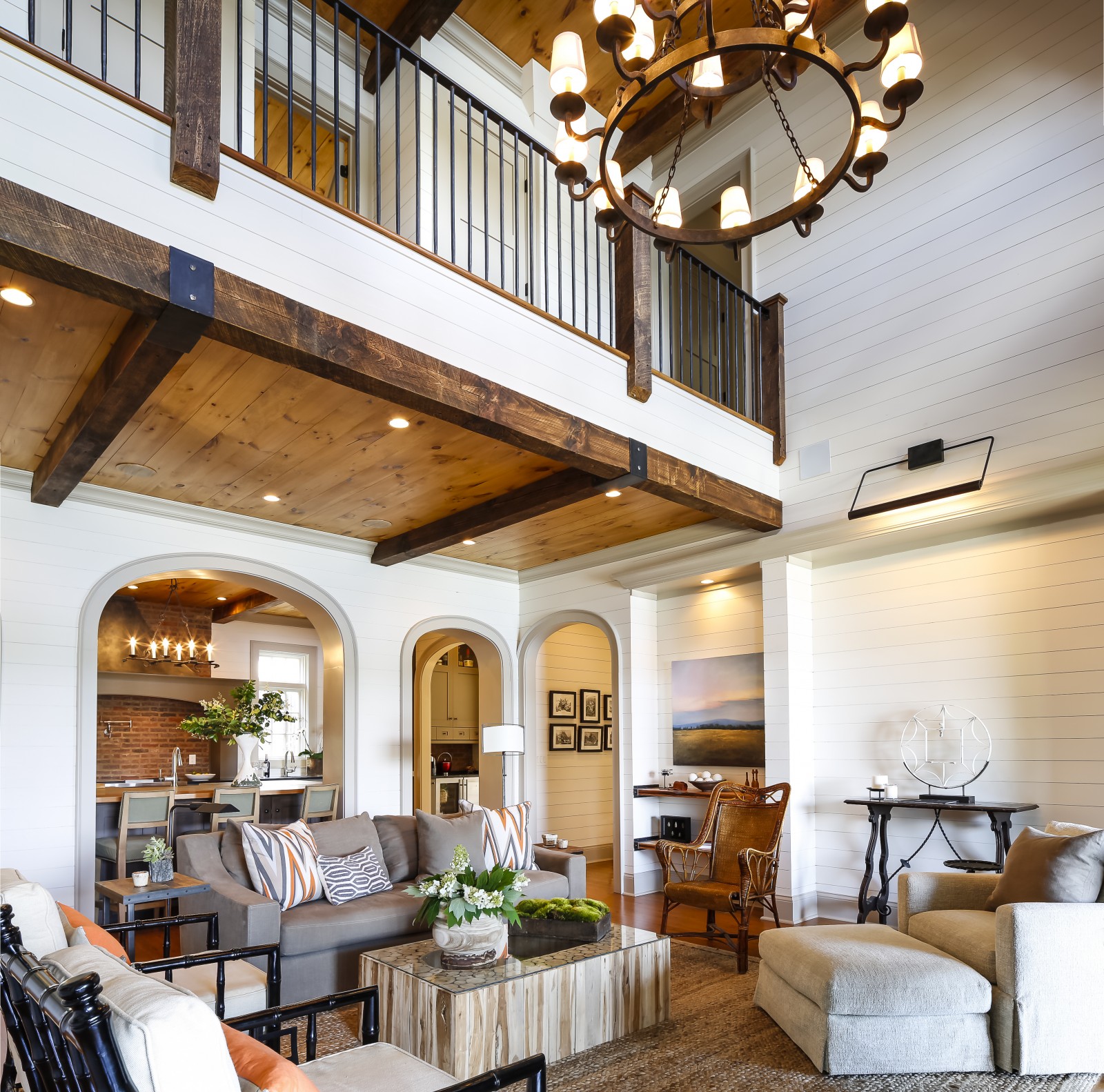
"On the outside, natural materials like wood and stone are used, and I wanted to carry that through the house," says Adele James Glascock, an interior designer with Adele James Interiors. "This house overlooks the river, so of course it was important to have that as a focal point - and to incorporate colors from the river and its surroundings into the home."
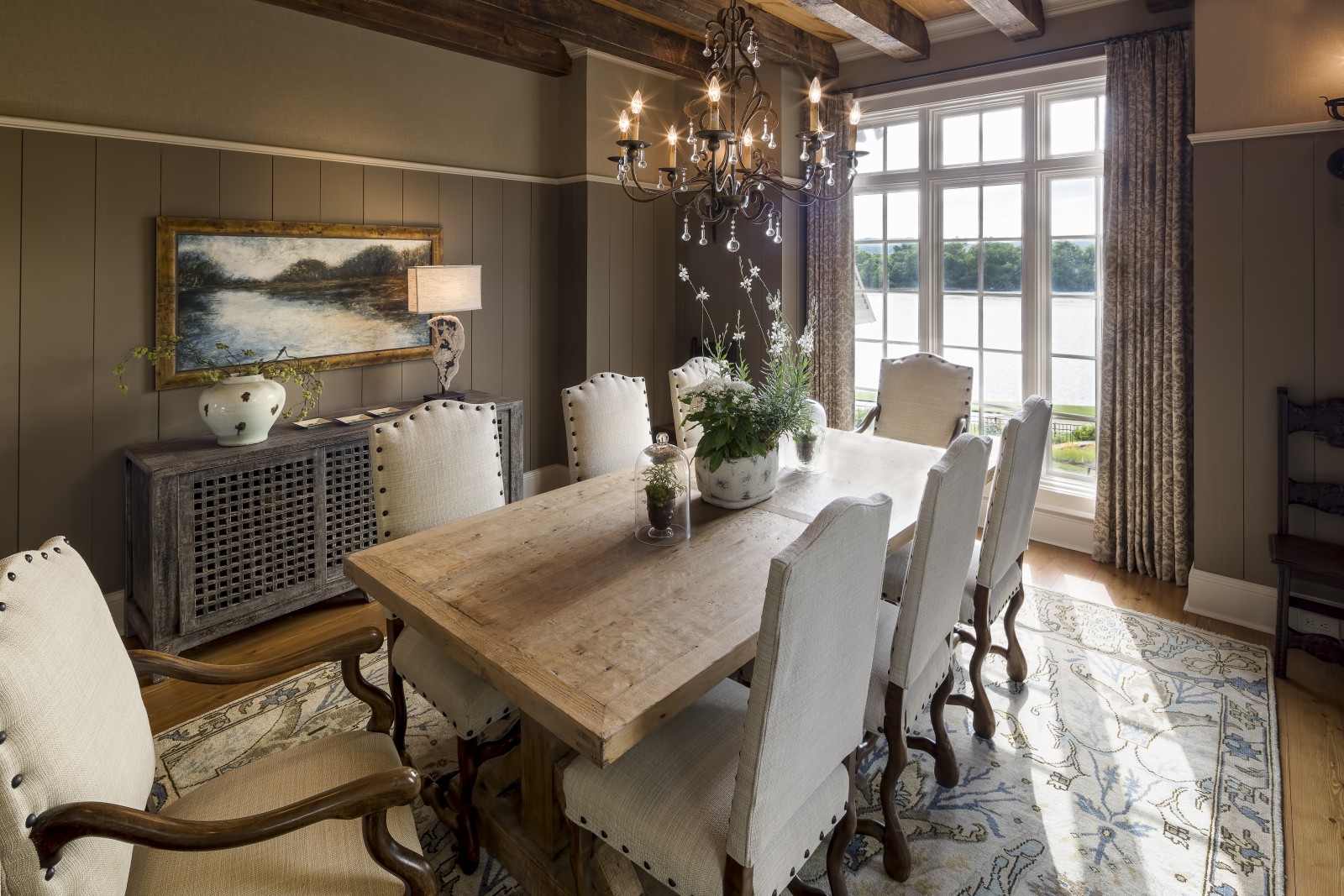
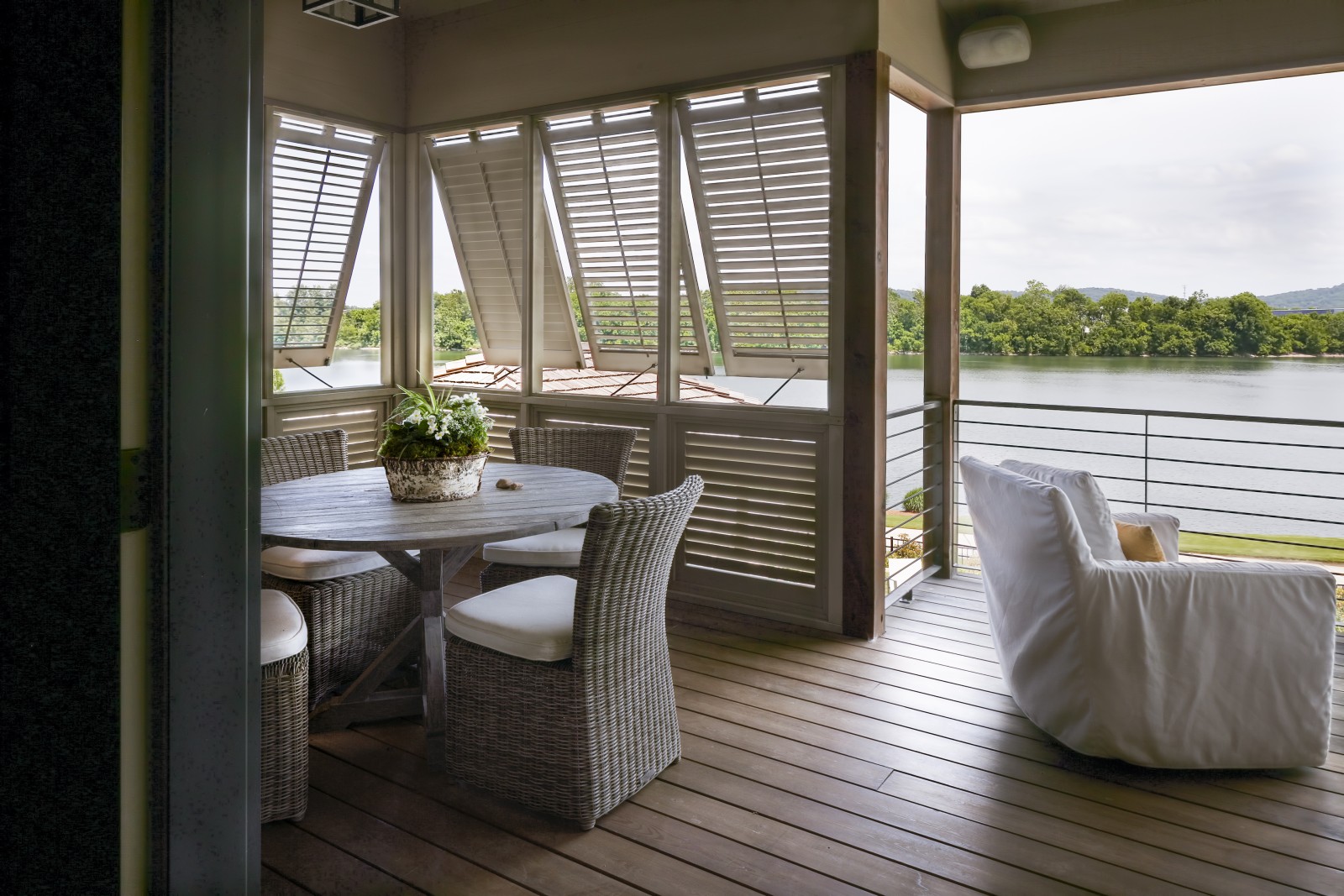
Throughout the home, you'll find a mix of organic materials and colors. Durable larch-wood floors are paired with shiplap walls and rustic beams. Sculptural metal light fixtures draw the eye upward to the warm wood-paneled pine ceilings.
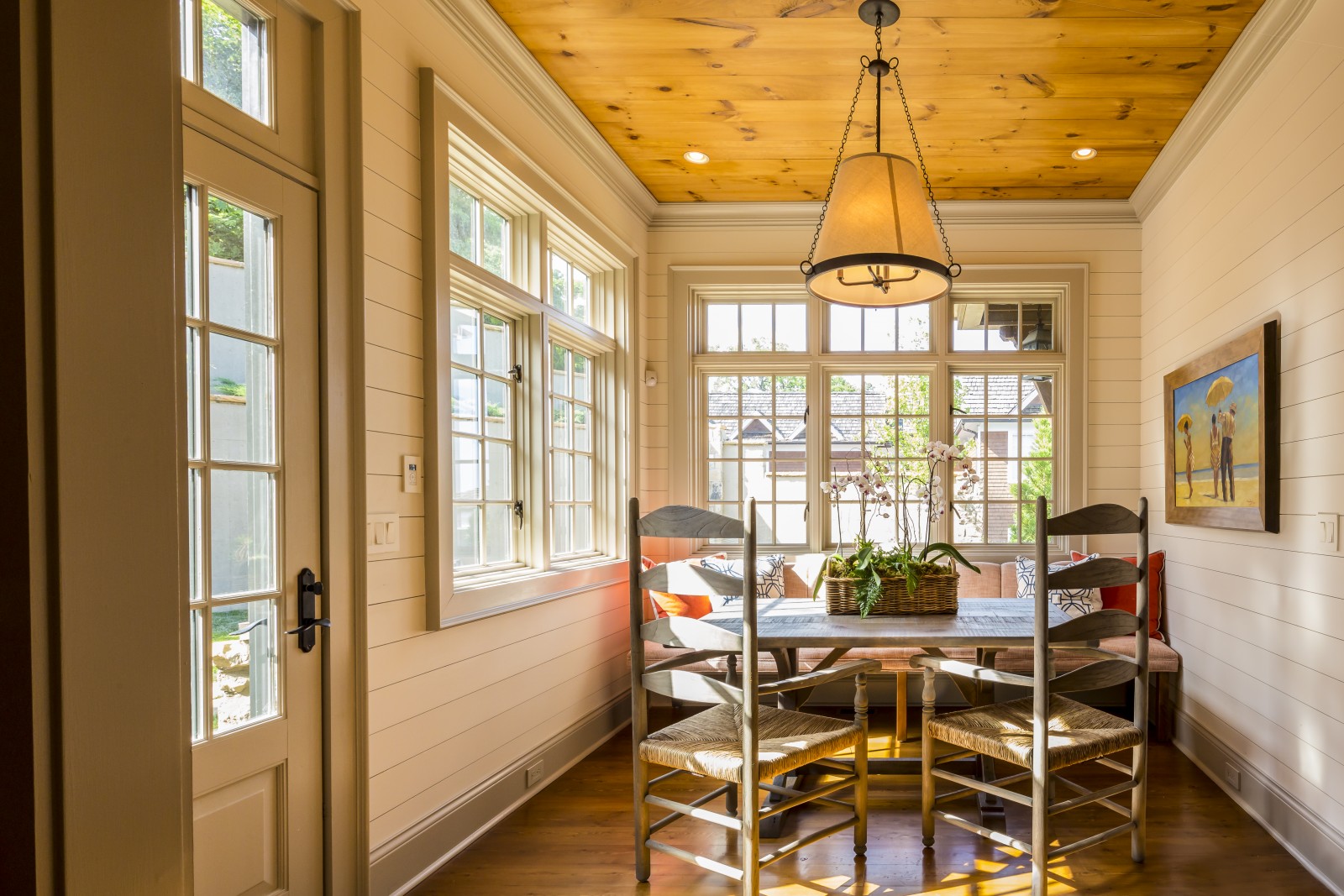
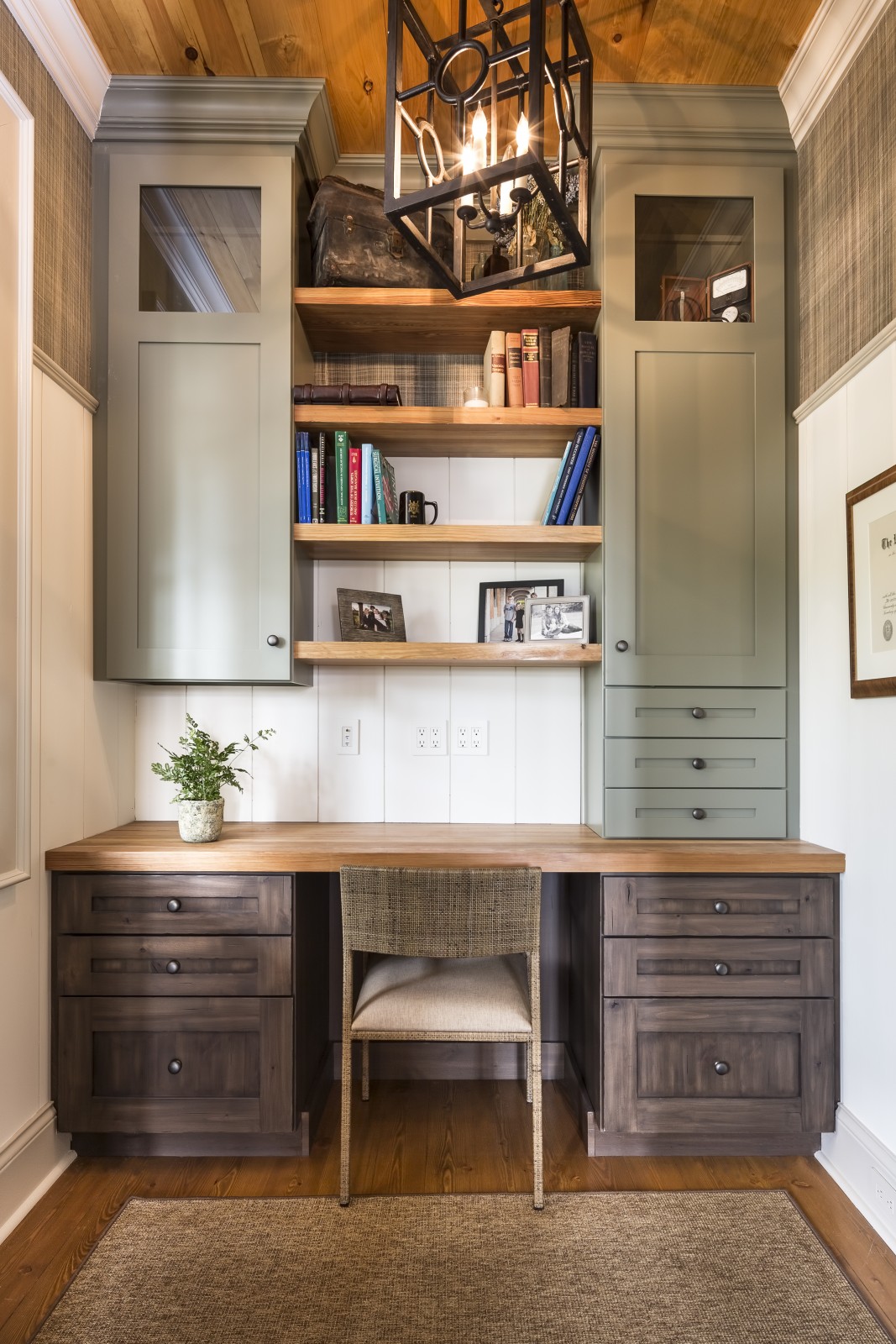
In the kitchen, wood cabinets painted in a neutral green-gray hue are set off by a brick backsplash. Other organic-inspired materials include soapstone countertops, a concrete and wood island, and a stainless steel oven hood with a patina.
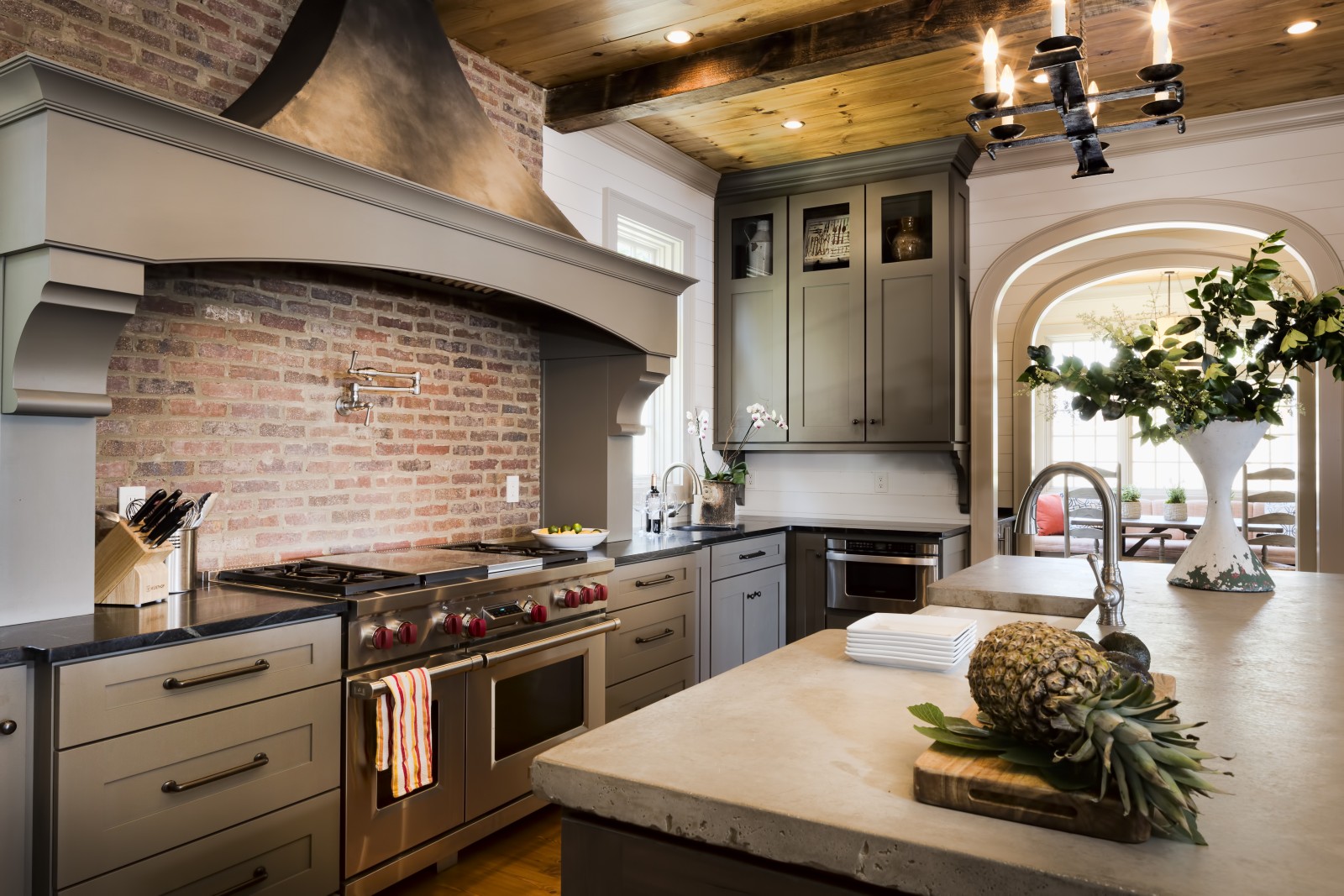
In the adjoining living room, white shiplap is juxtaposed with a dark beige trim to help define the space. In the main living area of the home, doorways framed with arches lead from the living room to dining room to kitchen.
"They act as a unifying part of the main level and public spaces," says Cooper. "They are intended to be the core language of the house."
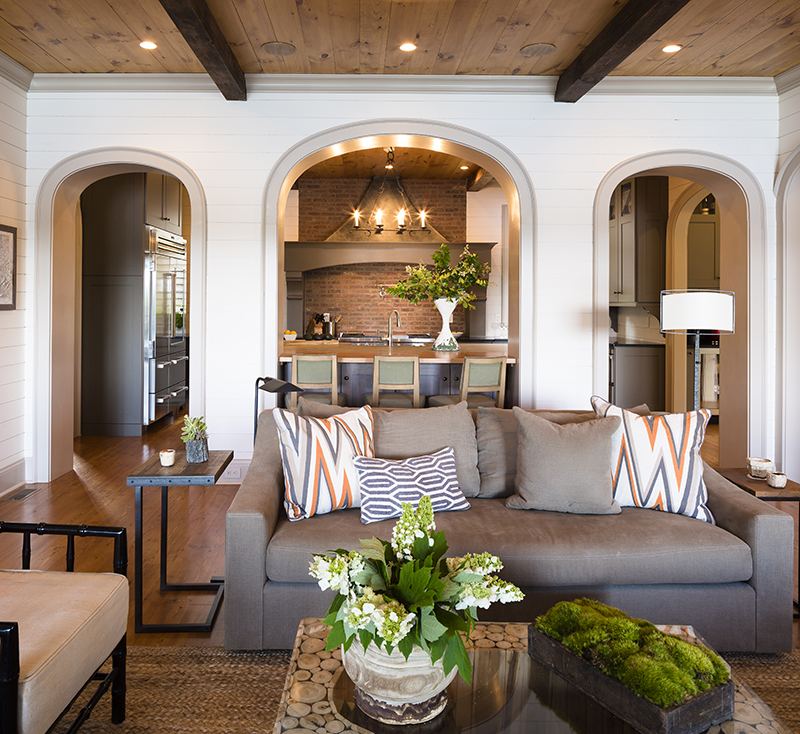
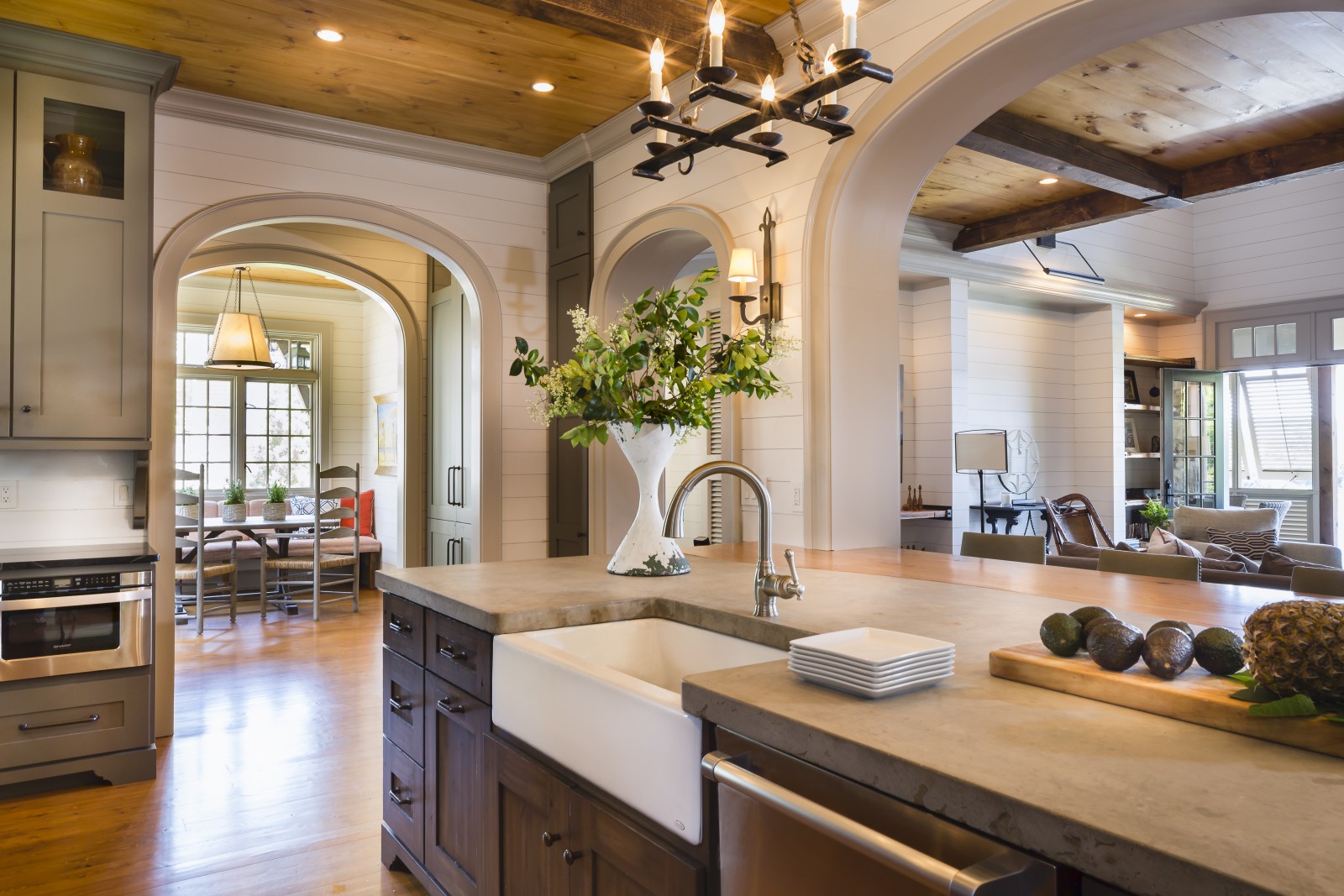
While the bones of the house are neutral, Glascock layered in textures, finishes and colors to bring each space to life.
Glascock chose to outfit the house in an array of antiques, vintage tchotchkes and furnishings made from reclaimed materials, adding a storied charm to the home.
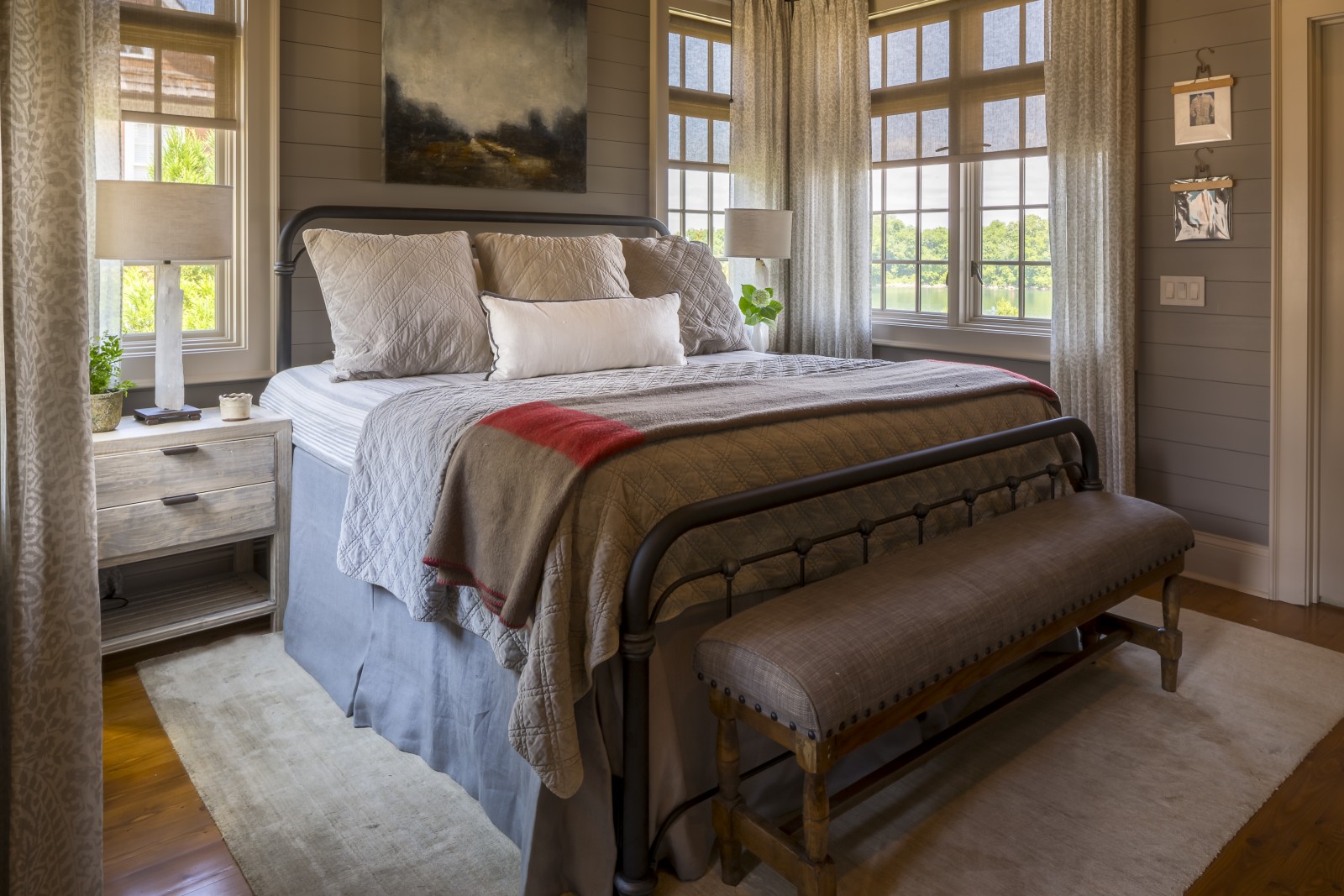
The top floor houses three bedrooms, while the main floor is home to a large master suite with a private courtyard.
The family-friendly house is fully equipped for entertaining, with a basement featuring an additional guest suite, a bar, arcade games, billiards and a place for kicking back and watching the game.
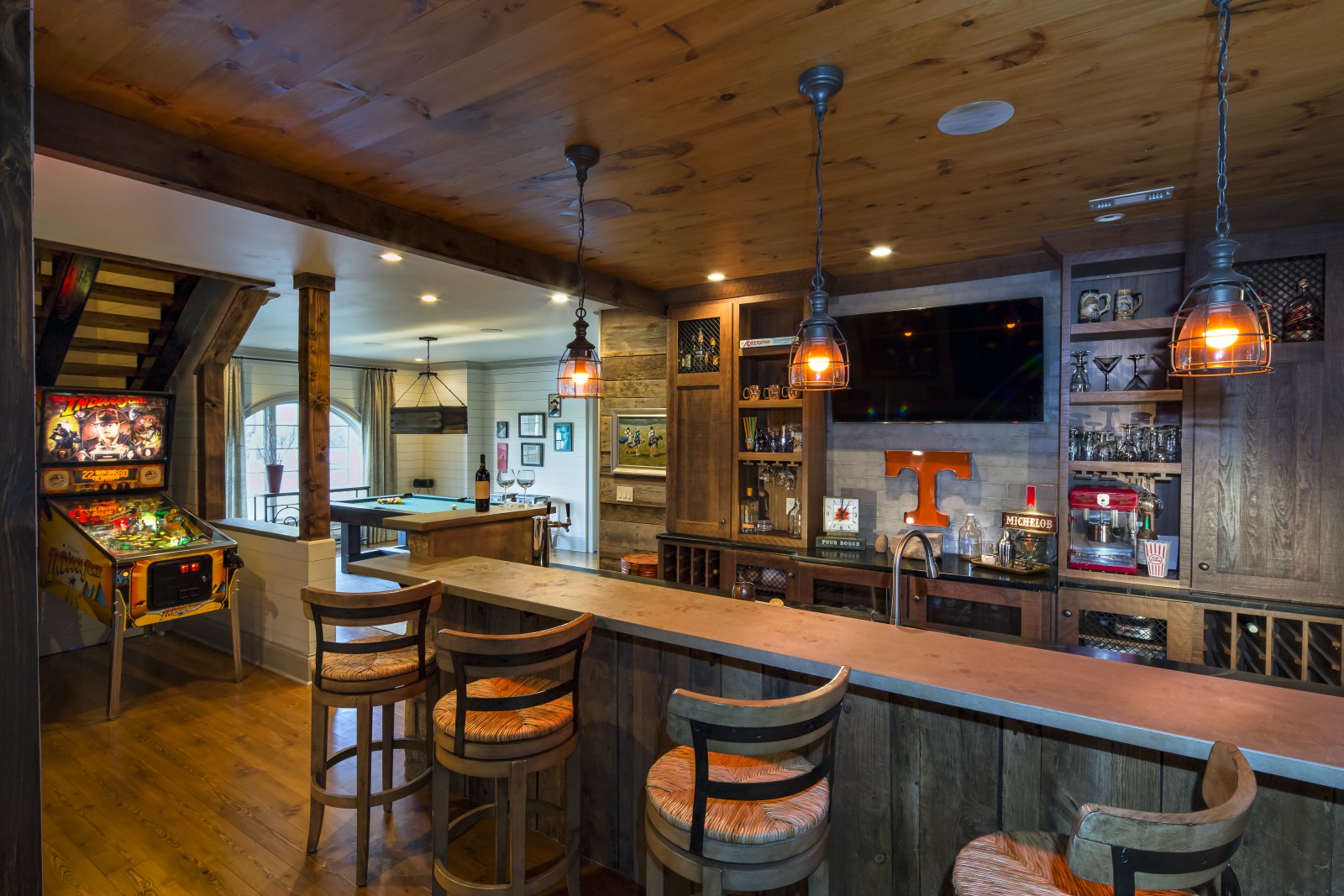
The party room opens up to a large patio area, where there’s even more space for entertaining - a fire pit, bar area, pool, cabana and cozy carriage house.
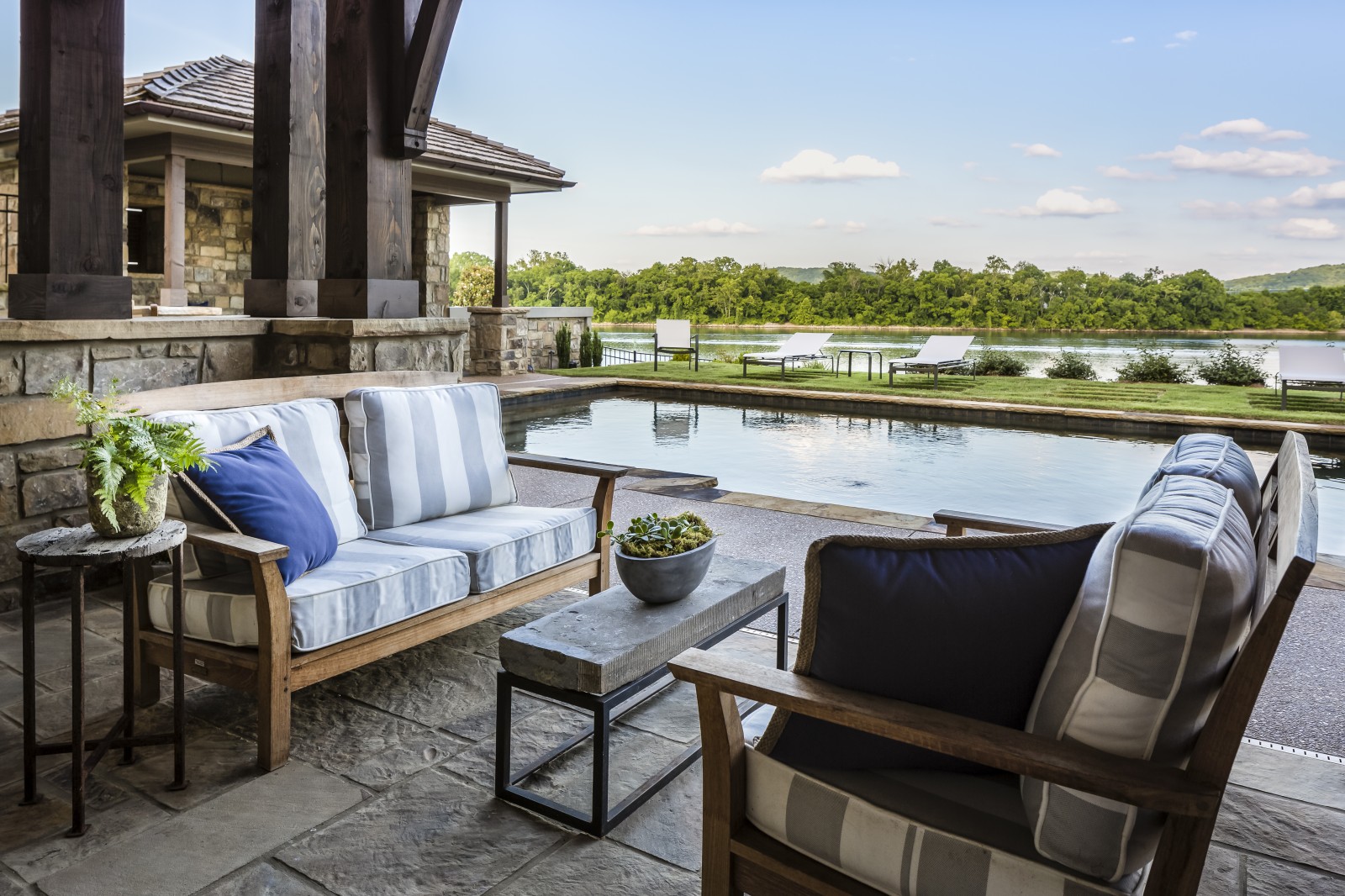
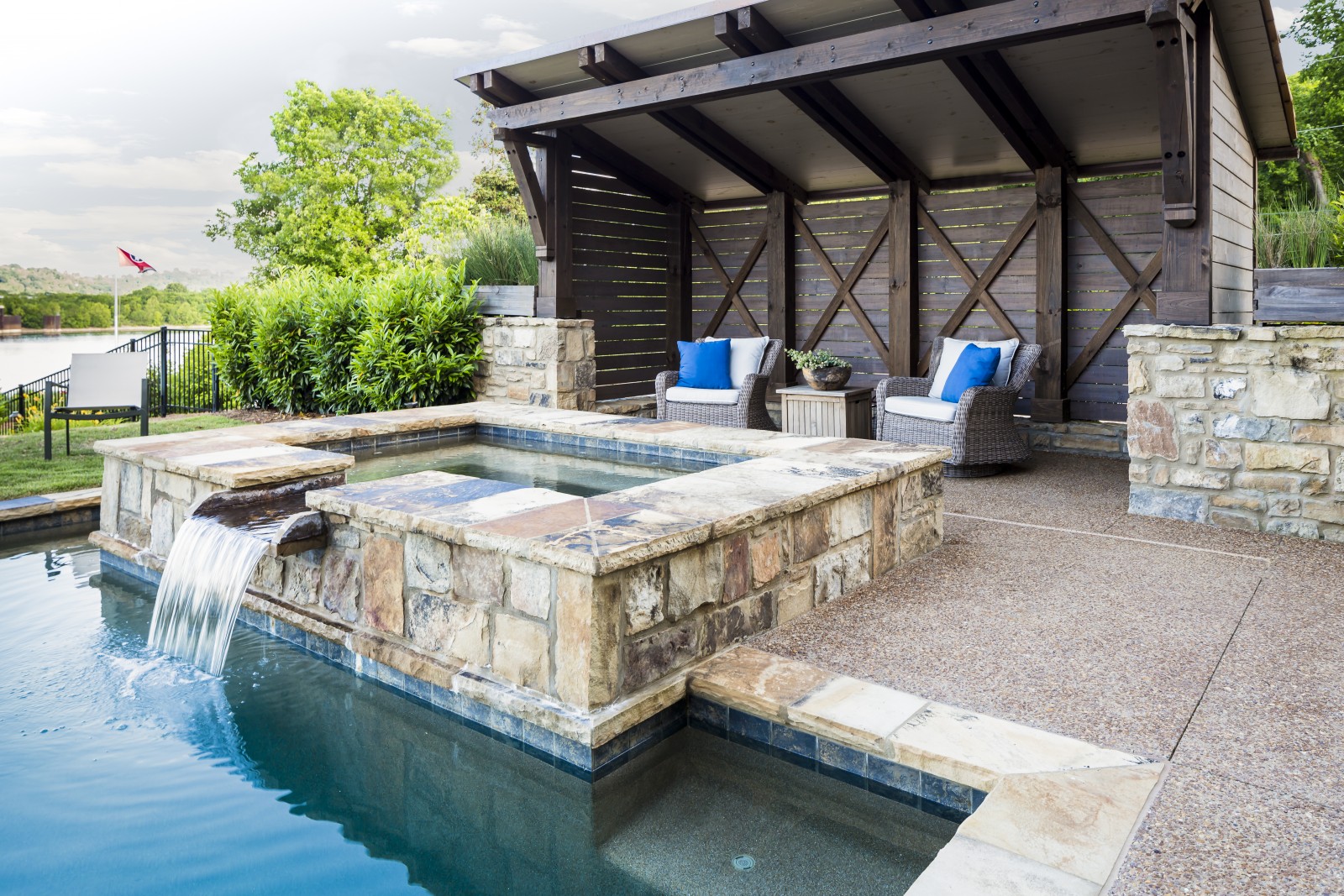
Get the look at home
- Draw decorative inspiration from your home's setting. For instance, the colors, materials and finishes used throughout this home echo the earthiness of its riverfront setting. "When you go to a cocktail party, you don't put on tennis shoes," says Glascock. "You need to be appropriate for where you are and what you have."
- Add character to a room by applying shiplap or painted wood to the walls. For an easy-to-install, affordable option, check out Stikwood's adhesive wood paneling.
- For rooms with neutral bones, layer in dynamic decorative elements that have color and texture, like artwork, tchotchkes and fabrics.
Photos by Ricki Chester.
See more design inspiration on Zillow Digs.
Related:
- Designer Lookbook: Rebecca Van’t Hull’s Colorful Weekend Retreat
- House of the Year: A Treehouse Tower With Water Views
- How Breaking 3 Design Rules Made Our Home Feel More Like Us
via Zillow Porchlight http://ift.tt/2nrWdOz
Monday, January 29, 2018
What NOT to Do When Remodeling Bathrooms
While a bathroom might not be the first room a potential home buyer asks to see, it can make or break the sale.
Here are five common mistakes both rookie and seasoned flippers and homeowners make when renovating a bathroom.
Mistake 1: Ignoring proper spacing and layout
Bathrooms may seem straightforward, but a lack of spatial awareness in the renovation planning stages can lead to problems down the road.
Remember: Just because you can fit something into the bathroom design doesn't mean it can function within that space. Always keep function in the forefront of your mind and in your design.
For example, if you choose a shower with a door, your bathroom layout should leave plenty of room for it to fully open. No potential home buyer will want to squeeze out of a partially opened shower door every morning. Other considerations include providing enough space to comfortably get on and off the toilet, open cabinet doors, etc.
Spatial considerations also include making sure elements of the room are close enough together to function. For example, the toilet paper holder should be within a child's arm’s reach of the toilet, and outlets should be easily accessible from the counter.
Mistake 2: Choosing the wrong materials
Because of the sink, toilet and shower, bathrooms deal with more moisture than any other room in the house. Homeowners also use many of the strongest cleaning products on bathroom surfaces. Both of these factors, if not taken into consideration, can lead to significant damage if you don’t select the right materials for the job.
Go with materials that can stand up to harsh cleaners and are not highly susceptible to mold, warping or distortion. Avoid porous materials that will retain moisture and allow hidden mold to grow.
Mistake 3: Ignoring storage space
No one complains about having too much storage in the bathroom. When planning a bathroom remodel, incorporate plenty of storage space into the design.
Consider how many people will use the bathroom. Don't make the mistake of providing only enough bathroom storage space for one person in a 4-bedroom house.
Additionally, most people prefer a bit of privacy with bathroom storage, so a set of floating shelves, while helpful, will not be sufficient on its own.
Mistake 4: Forgetting about ventilation
Ventilation isn't a glamorous part of a bathroom renovation, but it is essential. Forgetting to work in enough ventilation can lead to mold, mildew and other costly problems in the future. It can also make a bathroom uncomfortable if it’s not properly ventilated during or after a shower.
If possible, work in a combination of natural and artificial ventilation sources. A well-placed window can go a long way, but it won't be very helpful during cold winter months, when a homeowner won't open it. Make sure to install a quality ventilation fan that can handle the size of the bathroom.
Mistake 5: Putting off lighting plans until the end
Many people think of lighting as a finishing touch to a renovation. While lighting is often installed later in the process, you should plan your lighting fixtures at the beginning of the renovation.
Bathrooms are often where people get ready for the day, which is why lighting is essential. Recessed lighting can create shadows on your face in the mirror, and the last thing you want when trying to sell a bathroom is unflattering lighting.
Waiting until the end to address lighting can also lead to dark patches within the bathroom. Depending on your preferred shower style, you may or may not need lighting above the shower or tub.
Similarly, no one wants to use the toilet in darkness. When drawing up your plans, consider what type of lighting will best accommodate your space and room design. Making adjustments in the planning stages will be much easier than making them at the end of a project.
Top photo from Zillow listing.
Related:
- Is Your Bathroom a Total Snooze Fest? (It Doesn’t Have to Be)
- 10 Ways to Make a Small Bathroom Look Bigger
- 9 Signs It’s Time to Update Your Bathroom
via Zillow Porchlight http://ift.tt/2nmHfIF
Friday, January 26, 2018
Thursday, January 25, 2018
Tuesday, January 23, 2018
Home Shopping During Winter: What You Need to Know
A generation ago, few would consider trekking out in a foot of old dirty snow to shop for a home on the weekend. But with our always connected, information-flowing society, today's buyers shop and make deals all year long.
If you’re a buyer looking in a part of the country where you may not see a home’s front lawn until May, keep these points in mind as you shop.
Seeing a home at its worst is a plus
Let's face it, no home shows at its best in the middle of the winter. It's cold, dark and often wet. And that's great news for the buyer.
Why? Because you can discover its flaws, such as a lack of privacy, abundant street noise, leaks or drafty windows. You'll see the home in its worst "light" - and in some cases, you’ll realize it's just too dark or exposed.
Come spring, the flowers, grass, landscaping and foliage will only enhance the home.
You can ask to see summer or fall photos
Smart listing agents get exterior photos from their sellers to show off the pool, lawn, flowers, and gardens in bloom. Even though they’re listing in January, they should promote the home's assets from other times of the year.
If the listing doesn’t include photos, ask to see some. It means fewer surprises when the snow melts, the ground thaws, and it's now your home and your responsibility.
What about features you’re unable to test?
If the home has a pool that can't be inspected because the seller closed it for the winter, you need to request that they leave money in escrow or extend the closing time frame. When warm weather returns, you can inspect the pool and its systems to be certain it’s in good working condition, and free of leaks or damage.
Unless a seller provides a disclosure about some part of the pool not working, they're responsible for remedying any issues. If all works out, the attorney or escrow company will release the funds.
Documentation can help alleviate uncertainties
Frozen ground prohibits digging for contaminates of previous underground oil storage tanks. And homeowners typically winterize sprinkler systems, accessory apartments or cottages. In the event you can’t inspect every feature or get escrow funds negotiated, ask for documentation.
The plumbers, pool company and outside vendors should have records, so you can request documentation showing that all was shut down or closed out properly. Even better, ask to meet with the tradespeople who did the work.
It doesn’t hurt to ask
Although homes sell all year-round, it takes a determined customer to trek through the snow and ice to initiate a real estate transaction. For the right house, a winter purchase could spell opportunity. Double up on due diligence, and don't be afraid to ask for a longer closing or to arrange to have the home inspected come spring.
Everything is negotiable, so smart buyers should protect themselves. Once a deal closes, there is rarely sufficient recourse.
Related:
- Nashville Tops the List of Hottest Housing Markets for 2017
- Home Buyers: 5 Things to Know As You Wait for Closing Day
- How to Handle Long-Distance House Hunting Like a Champ
Note: The views and opinions expressed in this article are those of the author and do not necessarily reflect the opinion or position of Zillow.
Originally published January 18, 2017.
via Zillow Porchlight http://ift.tt/2rDEDfd
DIY Backyard Fire Pit: Build It in Just 7 Easy Steps
Turn your backyard into a cozy camp spot by making your own fire pit. This outdoor DIY project is easy to complete, and you'll be making s'mores and cuddling up by the fire in no time.
Get ready
Before you start building your backyard fire pit, you’ll need to gather some supplies: bricks for the fire pit wall, gravel, twine or string, a tape measure, a stake, a large shovel and a trowel, a tamp, and a level.

When purchasing bricks for the fire pit wall, go for something sturdy like retaining wall bricks or concrete pavers. Some home improvement stores even carry bricks specifically designed for fire pits. Use a layer of firebricks, which have a higher heat resistance, on the inner layer of the fire pit as an extra safety measure.
Also, before you begin building, be sure to consult your local fire code to find out whether fire pits are allowed in your city, and, if so, how far away the fire pit has to be from a structure.
Now that you have all your supplies and you’ve checked your local fire code, you’re ready to build!
1. Create a circle.
Pick out a spot in your yard for your fire pit (ensuring that it is located a safe distance from any structures, bushes, or trees), and insert a stake in the ground where the center of the pit will be.

Tie one end of the string or twine to the stake and measure how wide you want your circle to be. Typically, a fire pit has a diameter of about 4 to 5 feet. Cut the string, and tie the other end to the handle of a trowel. With the string or twine taut, drag the sharp end of the trowel around in a circle, creating a line in the grass.
2. Shovel out the grass.
Using a large shovel, dig out the grass inside the circle.

For safety purposes, the hole for a fire pit should be about 6 to 12 inches deep. Be sure to call 811 before you start digging to ensure there are no utility lines buried under the spot you’ve chosen.
3. Tamp down the dirt.
If you don't have a tamp, you can just use the bottom of your shovel.
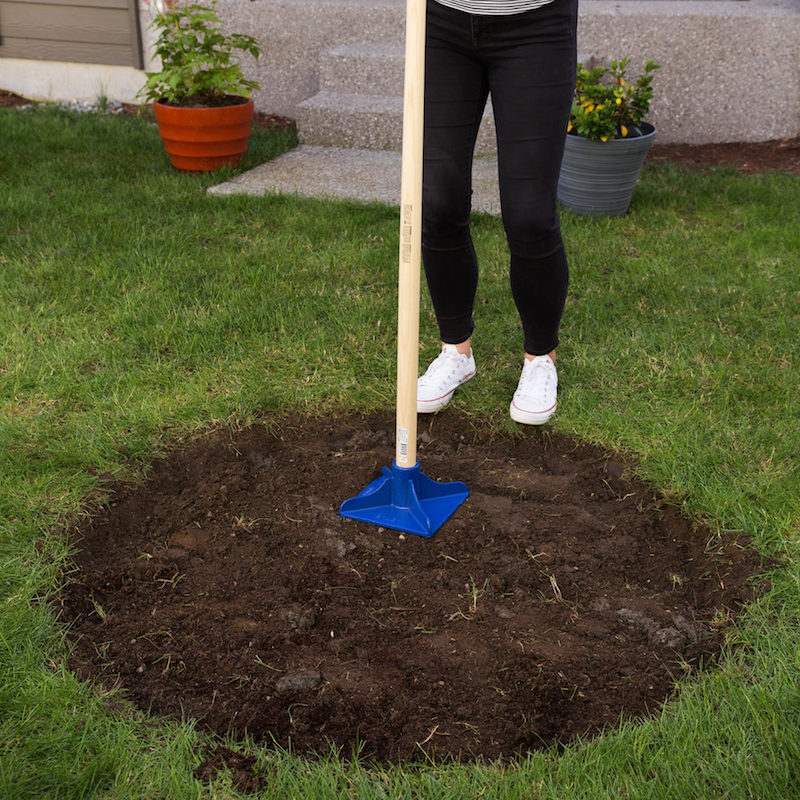
4. Make sure the circle is level.
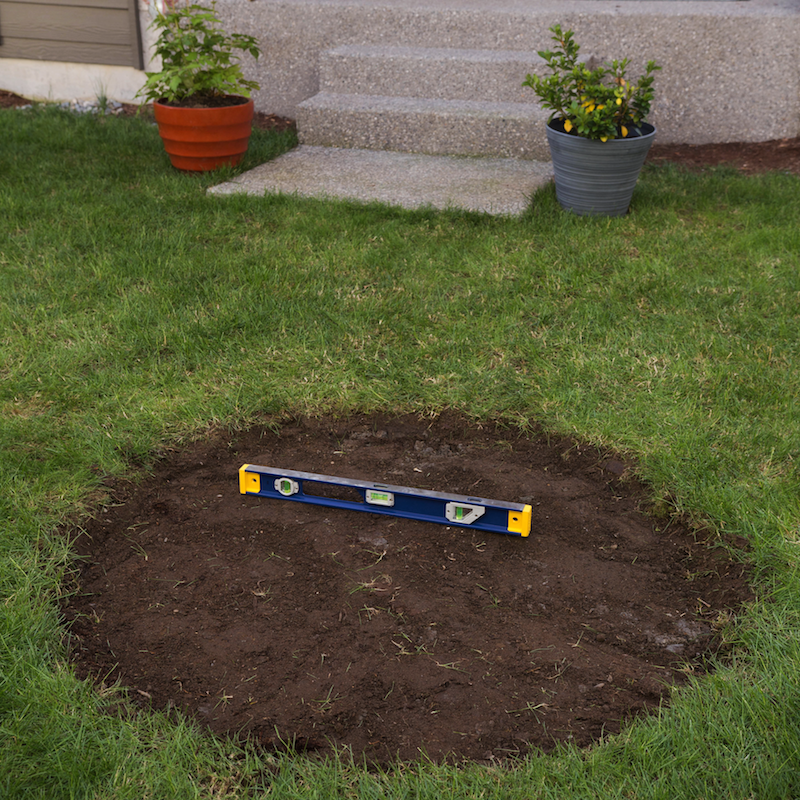
Get down on the ground with your level to ensure that the surface is ready for the bricks to be laid. Keep making small adjustments until it's completely level.
5. Add gravel.
Put a pretty thick layer of gravel in the fire pit (at least a couple of inches). Spread the gravel around evenly.
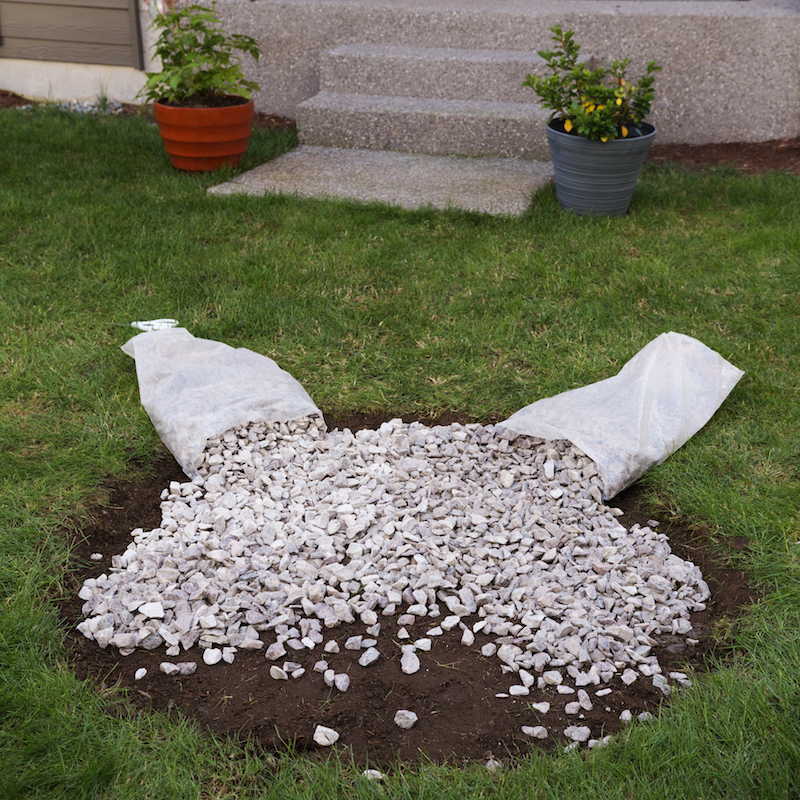
6. Arrange the bricks.
After you've spread the gravel around, arrange your bricks in a circle and stack them in layers until the fire pit wall is at least 12 inches tall.
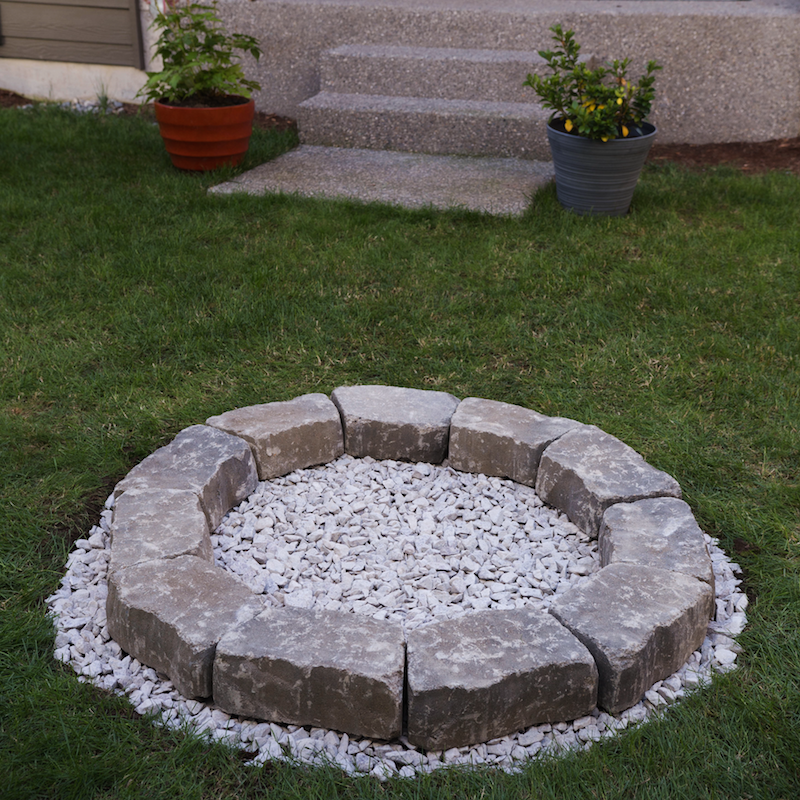
For extra safety, you have the option to put an inner layer of firebricks. Though you don't need to use mortar if the bricks are heavy enough to make a sturdy stack, you can use an outdoor, fire-resistant mortar between the bricks for extra stability.
7. Relax and enjoy!
Gather a couple of Adirondack chairs, some firewood, a few friends, and campfire treats to get full use out of your new fire pit.
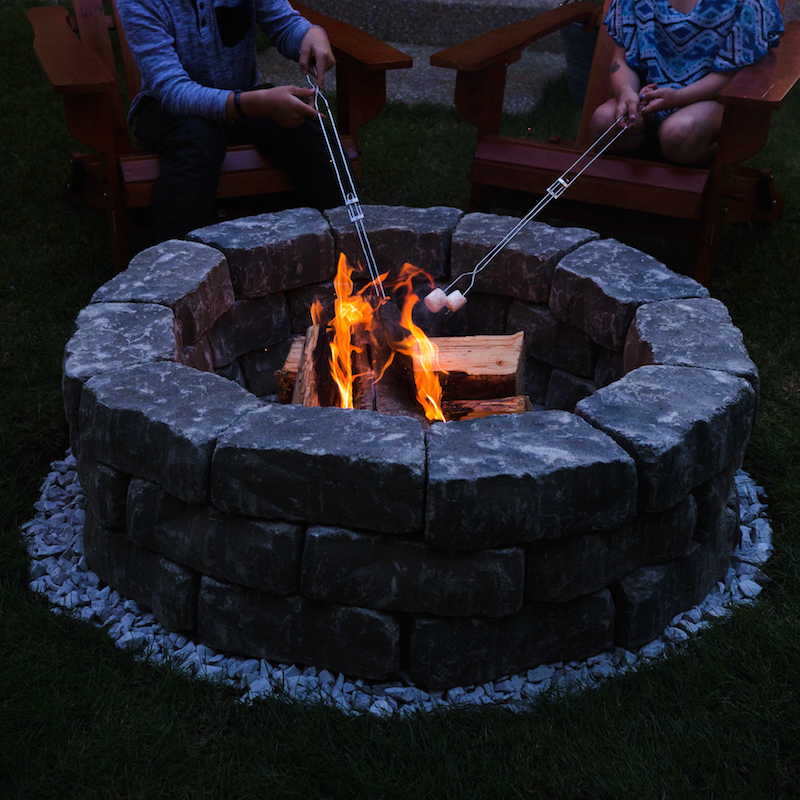
See more fire pit design inspiration on Zillow Digs.
Originally published July 19, 2017.
Related:
- 9 Fire Pit Designs to Fuel Summer Fun (Plus One You Can Build Yourself!)
- How to Plan an Outdoor Movie Night
- Budget-Friendly Staycation Ideas for Families
via Zillow Porchlight http://ift.tt/2vDLRg7
A 3-Step Plan for Finding and Buying Your Next Home
Chances are you've considered buying a home - maybe you even attended a couple of open houses and ran the numbers. But once you get serious, there are a few points you need to consider before signing a contract and heading to your closing.
Buying a home takes more time and research than, say, buying a tablet or smartphone. Before diving in, it’s important to understand the process. Every home buyer’s journey happens on a slightly different timeline, but here are some steps every prospective buyer should take.
1. Search and discover
The home-buying process often occurs organically, and may begin a year or more before the actual purchase. You'll get started by viewing home listings online to discover what types of homes you can get in different price ranges.
Look at homes in your favorite neighborhoods, and review statistics and reports on home values. Use this time to dream about some of your favorite home features, and start to put together your list of priorities.
Most buyers will find a property during this phase that prompts them to move to the next stage.
2. Do the math and your required homework
Most would-be home buyers need a mortgage to purchase a home. While the process has gotten easier as we've moved farther away from the financial and lending crisis, it can still be challenging if you're not prepared.
You need to know what you can afford, the types of loans available and how what you can afford will affect your home search. Pull your credit report, and understand your financial situation. Then you can get pre-approved.
Many buyers need to repair their credit score, save more money or allow cash to season for some time before buying. Use the next few months to address any financial issues.
3. Dive in and have fun
At some point along the way, you should connect with a local real estate agent. These relationships form early, and having that person beside you during your search should be invaluable.
Go to open houses, make appointments and see as many homes as possible. Before making an offer, you'll need to know the market inside and out. The more homes you see, the more you will know about your local real estate market, and the more confidence you will have when that dream house comes along.
And if you miss out on a deal or two, it’s okay. It’s all part of the process. Don't feel rushed, and realize that the home search often becomes a part-time job. Have fun with it.
If you find yourself in the real estate market prior to doing significant research, you may be jumping the gun. Unlike a tablet, smartphone or even a car, a home is a long-term investment - and a special one at that. It's where your life will happen. Move too quickly and buyer’s remorse can creep in.
Related:
- Making the Most of an Open House Visit
- ‘What Are Comps?’: Understanding a Key Real Estate Tool
- First-Time Home Buyer’s Guide to Making an Offer
Note: The views and opinions expressed in this article are those of the author and do not necessarily reflect the opinion or position of Zillow.
Originally published September 14, 2015.
via Zillow Porchlight http://ift.tt/2rzUMSv
3 Weird Things You Can Ignore When Home Shopping
In 15 years of real estate, I can honestly say that I've seen it all. Toilet seats up in listing photos, shag carpet covered with dog hair, bedrooms doubling as marijuana growing centers, and avocado green appliances from the ’70s.
Sellers aren't required to get their homes in their best condition before showing them - let alone cleaning their home before listing. But one seller’s laziness can spell a giant upside for the right buyer.
Here are three sights that may be off-putting when you’re shopping for a home, but shouldn’t stop you from considering making an offer - particularly if you love the home, layout or location.
Odd wallpaper and dirty carpet
Today's buyers generally prefer a home that’s turn-key or move-in ready. They’re too busy with their day-to-day lives to take on a renovation - and this is especially true for the continuously connected, mobile-ready millennial home buyer.
But painting walls and replacing carpets isn’t always time-consuming or expensive, and you can do these projects before moving in.
If a seller won't replace their shag carpet or paint the interior a neutral color, they’re shooting themselves in the foot.
A fresh coat of paint and finished floors or new carpet won't break the bank or take more than a week, and the end product will be a like-new home for you to move into.
Rooms being strangely used
It's not uncommon to see a home’s dining room transformed into a full-fledged office. Some homeowners even have a bedroom doubling as a walk-in closet. I once saw a first-floor bedroom turned into a wine-tasting room.
Just because the homeowner uses these spaces in a way that suits them, doesn't mean you have to. These rooms might stand out as odd to you, but try to forget that the seller lives there.
Once they’ve moved out, the dining room will be a space that just needs a great light fixture and table. The walk-in closet can be turned back into a bedroom in less than a day.
A too-strong seller presence
It’s difficult for a buyer to imagine themselves in a home if it’s full of the seller's photos, diplomas and other personal belongings. The best homes for buyers are those that are neutral and lacking any items specific to the owner.
What's worse is when the seller is present at a showing. It makes everyone uncomfortable. The buyers feel like they need to be on their best behavior and can't explore the house, dig deep into closets or cabinets, or feel free to talk out loud about what they see.
A home that is too personalized or where the seller is always present can sit on the market and get a bad reputation over time. A smart buyer will use that to their advantage and snag it below the asking price.
Sellers who sabotage their home sale - whether intentionally or not - leave money on the table for the buyer. But typical consumers today have a hard time seeing through a seller’s mess, personalized design style or custom changes.
If you see a home online that’s in a great location with a floor plan that’s ideal, go see it. Ignore the things you can change, and think about whether you can make the home your own.
Related:
- 4 Tips for Buying a Fixer-Upper
- Home Buyers: Make Note of These 3 Dealbreakers
- Sellers: Are You Making Your Agent Crazy?
Note: The views and opinions expressed in this article are those of the author and do not necessarily reflect the opinion or position of Zillow.
Originally published July 1, 2016.
via Zillow Porchlight http://ift.tt/2GbCZVk
Why Home Buyers and Agents Need to Have Each Other's Backs
Searching for a home and engaging with a real estate agent today is not the same as it was a generation ago. The space (both physical and virtual) between the buyer and the real estate agent was much larger, and coming together was slower and more methodical.
If a buyer saw a For Sale sign or an ad in the paper, they might call the real estate agency’s office, get some information, and move on. Or they could walk into an open house solo. They could be rather anonymous.
But today's home buyers live online. They can click, text or email with agents, and seriously engage within hours. But does that mean they are active and serious buyers ready to transact? Not necessarily.
The real estate agent’s experience
Meanwhile, real estate agents, who are commission-only independent contractors, will sometimes drive around for hours showing homes. They may take these buyers around for days or weeks, thinking they have a live client they can help. They might make an offer or two on behalf of the customer, even be present at a two- to three-hour-long home inspection … all before the buyer decides to back out. They may buy a different house from the agent, or they may not.
Well-intentioned, hardworking agents can end up feeling like their time isn't valued - particularly when they never hear from that buyer again.
Who's responsible?
Is it incumbent on the agent to be better at time management and qualifying their potential buyer clients? Or should the buyer be clear with the agent early on if they aren’t serious just yet?
I think that the consumer comes first, and it’s up to the agent to better qualify - as best they can. But it's also part of the business, and par for the course. Agents sign up for a sales job, and they can't win every deal. They need to ask lots of questions of their new "client" before offering up their time and cashing a paycheck that doesn't exist.
Some consumers relish the attention they receive from this new "friend" who will drive them places, show them around, and teach them something new about the world of real estate. If the buyer isn't paying for the agent's time, the reasoning often goes, why not take a few rides and see some great houses?
But soon-to-be homeowners should be mindful of their intentions, and considerate of the resources the agent is delivering.
So what's a buyer to do?
Should everyone stop looking online or clicking the “Contact Agent” button? No way. Consumers should always feel free to click away, ask questions and gather information.
But they should be mindful of how things work once they start seriously engaging. Most buyers don't realize that there is a process to buying a home, and that it rarely happens overnight. From the time they first click on the photo of the killer master bathroom until they get the keys, it might be one year and three dozen (or more) house tours.
And if things don't feel right with the agent with whom you engage early on, move on. Keep researching independently, or get a referral for a good local agent. Or, better yet, just go with the flow and the right agent will come along organically.
And what about agents?
Real estate professionals need to understand that one text, click or email does not make an active buyer. A good agent has a handle on the sales process, and asks buyers lots of questions to get a read on them. A good agent fills their sales funnel with a mix of folks in all parts of the home buying process.
Early on, an agent needs to be a guiding light, resourceful and ready to answer questions. As some of their buyers get more serious, smart real estate pros know where to direct their attention.
Related:
- Home Buyers: 3 Signs It’s Time to Enlist a Real Estate Pro
- Questions to Help You Find the Right Buyer’s Agent
- 6 Critical Questions to Ask When Buying New Construction
Originally published May 23, 2016.
via Zillow Porchlight http://ift.tt/2rzULOr
6 Ways to Score a Lease in a Competitive Rental Market
In a competitive rental market, you'll need to do quite a bit more than simply fill out an application and put down a deposit. Since 2005, there has been "an uptick in renters, with people in their 50s and 60s making up the largest chunk of the increase," CNN Money reports.
With large numbers of millennials and Baby Boomers competing in a growing pool of renter applications, it's important to consider ways to boost your odds during the application process. Read on to learn how to give yourself an edge over other renters when you're applying for a rental home in a competitive market.
Apply online in advance
If you've browsed photos online of your dream rental property over and over, and your gut feeling is telling you that you've found "the one," there's no harm in filling out an application online if the option exists. This shows the property manager you're already a serious applicant when you visit the property.
Come prepared
When you arrive for a viewing of the rental property, come with a copy of your credit report, copies of your last few pay stubs, your checkbook, and a printed list of references (including your current employer and previous landlords).
Make the application review process easy for the property manager by bringing hard copies of more than enough application materials than your potential landlord would ever need.
An optional (but oh-so-helpful) document for your application package is a letter written to the landlord, explaining why you would be an excellent tenant - and if you've already visited before, what the home means to you. Think of the application packet as an argument for why you're the tenant for them.
And beyond documentation, bring a strong interview game. Prepare for your first meeting with your potential landlord as you would for any job interview. You'll be asked questions, but additionally, they expect you to present questions to them, too. This shows you've been thoughtful about the application process, and take the potential of living in their rental home seriously.
Express interest
It may seem obvious, but property managers want to see applicants excited about their home.
While Utah-based landlord James Hedges certainly values excellent references, he looks for a potential renter who gives the impression that they appreciate the home. "Ultimately, you want someone who will take care of and respect your property,” he says. “How they react when they go through it should not be discounted."
"Showing an interest in the place and the neighborhood helps because it makes me feel like [the potential tenant] will treat my [rental] home and neighborhood as their own,” Virginia-based landlord Julia Jarrett adds. “That sets me at ease a bit."
Be flexible
With lots of applicants in the pool, landlords often have a tough choice when deciding on a tenant. In addition to offering strong application materials and expressing sincere interest in the home, showing your ability to be flexible is another way to stand out.
If you're able to sign a longer lease, say so. It shows serious commitment, and means your potential landlord won't have to hunt for more tenants anytime soon - surely a relief for them.
And if it seems like the landlord wants to get the property rented immediately, mention that you're willing to move in earlier than your listed preferred move-in date, if that’s possible.
Be transparent
Property managers will check references. Stretching the truth about something almost always comes out.
"If you lie on the application or in person and a reference contradicts you, it’s a huge red flag,” Hedges says. “Any indication of money problems is a red flag as well."
This hint may come in the form of an applicant haggling on price, negotiating what's included in the price, or asking to cash their check within a certain timeframe. "None of these are guarantees that they will be a bad renter, but they are warning signs that a landlord would take into consideration," Hedges explains.
Iowa-based landlord Laura Kilbride suggests potential renters keep their social media profiles somewhat public. "Having your Facebook profile visible can be a huge advantage,” she says. “If your profile is blocked, they can’t connect with you, and that’s off-putting when [another applicant] has theirs readily available."
Follow up
After leaving your meeting or open house with the landlord, send an email thanking them, along with asking any follow-upquestions you may have. This encourages further dialogue, and having your name in their inbox serves as one more reminder as to who you are.
Hunting for the perfect rental property doesn't have to be a headache. Once you've found the rental home of your dreams, it's up to you to make the application process easy for the property manager.
Looking for more information about renting? Check out our Renters Guide.
Related:
- The Pros and Cons of Month-to-Month Leases
- Avoiding Pitfalls Before You Sign a Lease
- Quirky Rentals Packed With Personality
Originally published April 29, 2016.
via Zillow Porchlight http://ift.tt/2Gd0r4j
Saying 'I Do' to a Tiny Grain Silo Home
Christoph Kaiser finishes his latest sketch, while Shauna Thibault chops vegetables. It’s a delicate dance in 366 square feet, but the newlyweds aren’t fazed.
“There’s something about living in a small space that simplifies life,” Kaiser explains. “It quiets the mind, in a way.”
The couple isn’t renting a micro-apartment, although their urban Phoenix lifestyle might make you think so. They live in a grain silo.
“I think there was a healthy level of skepticism from our friends and family when they found out we were going to attempt to live in a grain silo,” says Thibault. “But we love it. … It’s not just an experiment.”
The stylist and boutique owner has always been drawn to minimalist living. And for her husband, an architect, unique dwellings pose the ultimate design challenge.
“What can you live in and still have a sense of home?” Kaiser says. “It’s easy to cram all the parts that you need to live in something. It’s easy to build it, even - relatively speaking. … The real challenge is to end up with a piece of architecture that actually feeds your soul, as opposed to draining it.”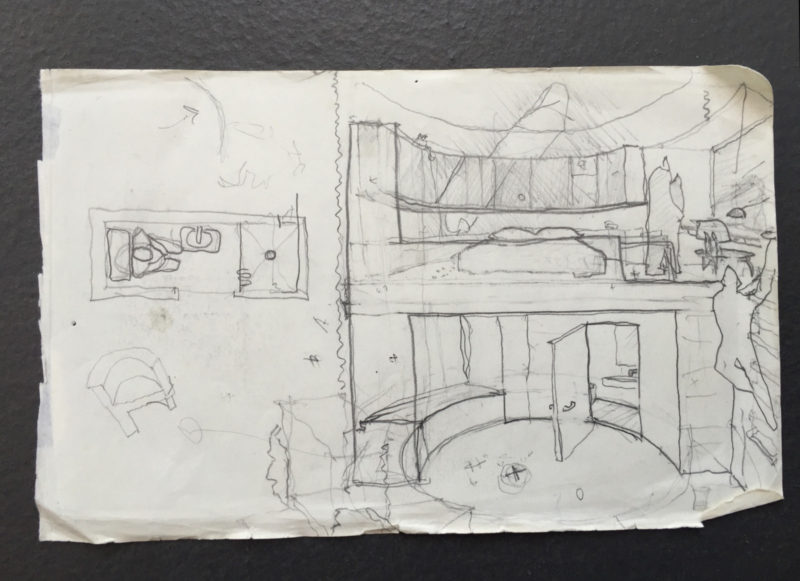
But Kaiser didn’t wake up with the idea to turn the silo into a home. The rusted, metal cylinder was originally a Craigslist find to store his garden tools. Then, with his wedding date approaching, he started drawing up plans with his architecture and design firm.
“Once we started, it was about an 18-month process with a few breaks in between where I would run out of money and have to make money, so I could invest some more,” Kaiser explains. “At a certain point, we were just like, ‘Oh my goodness, we’ve been anticipating living in this project for such a long time.'”
Unique projects bring unique challenges - and the silo has had its fair share. With most furniture and appliances designed on a 90-degree angle, Kaiser had to figure out how to fashion a home in a curved space. He ended up building everything from the kitchen cabinets to the doors himself.
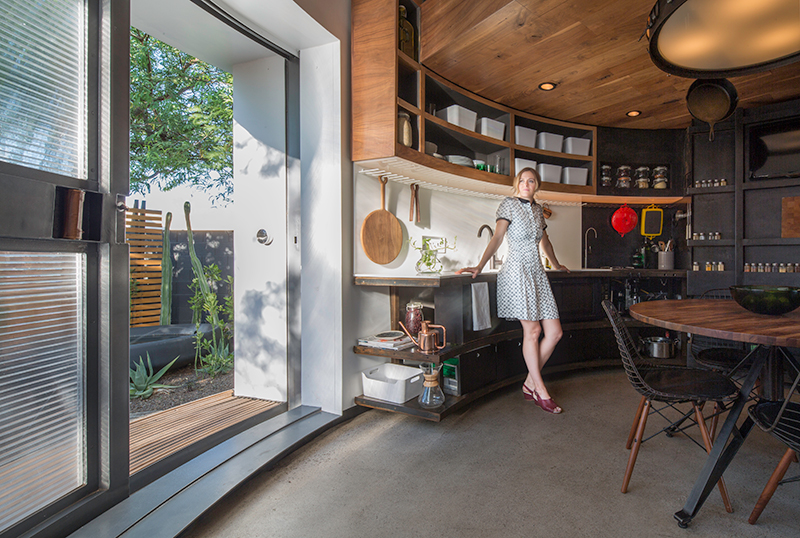
A giant glass door on wheels serves as an entrypoint into the backyard, and a way to open up the space.
“To have the benefit of outdoor space, which is an extension of the living space, is huge,” Kaiser says. “Whether you’re sitting inside and have this 10-foot-rolling door open and you just have a view you can experience … or you’re outside enjoying it directly, I think it was definitely something we considered as part of the floor plan.”
“You can sit and read and, ‘Oh, let’s pick a few weeds,’ and then bring some produce inside,” Thibault adds. “Everything is very fluid.”
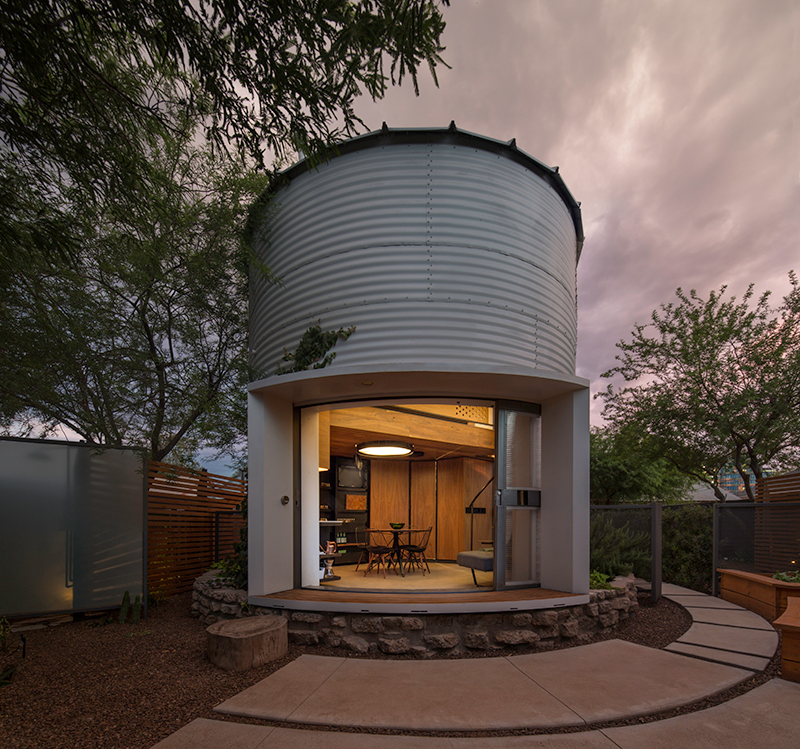
But when the couple experienced their first storm in the house, indoor-outdoor living became a little too real.
“We had water coming in through the front door, water coming in through the radius door,” Kaiser recalls. “That was not a fun night for me, because it’s kind of my responsibility to make sure this thing actually works, and all of a sudden these things were failing.”
The couple also had to figure out how to make a functional space for two when they don’t have rooms, per se, other than a teeny bathroom. They ended up creating a separate sleeping loft, where Thibault loves to watch movies in bed.
“You feel like you’re at the IMAX,” she says. “You can lie in bed, and it projects arced on the wall. Subwoofers are hidden underneath the bed, so everything kind of shakes. You can watch ‘Jaws’ in full format. It’s pretty great.”
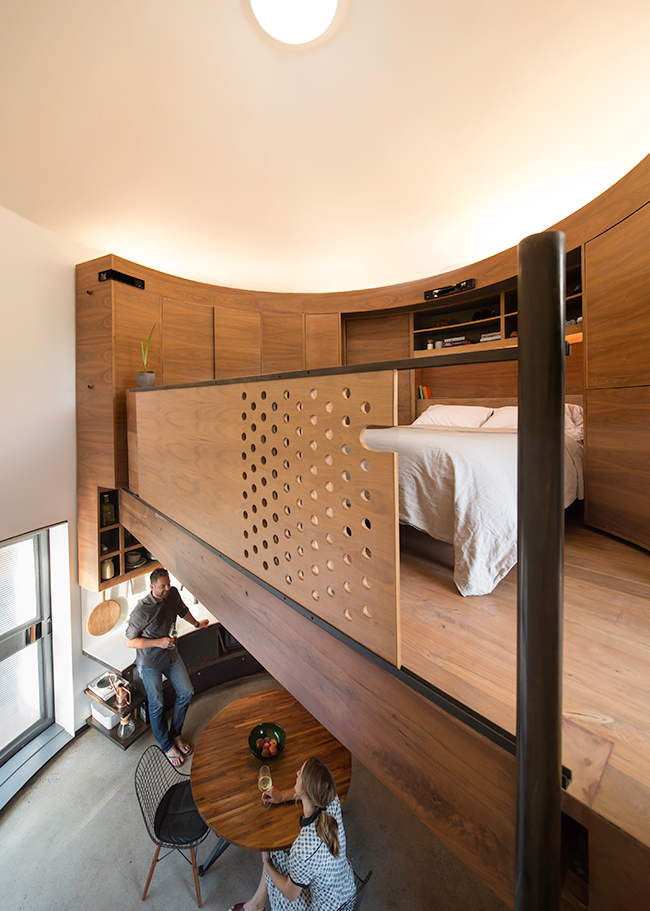
Kaiser says the space has brought the newlyweds closer.
“I think there’s an intimacy that’s imposed on people when they’re in one space. You can’t find that separation,” he says. “… It makes you confront issues more, and it really brings you together.”
“I think we’ve learned a lot about our dynamics, and the way that we work and accomplish things,” Thibault adds. “[It’s] very coupling.”
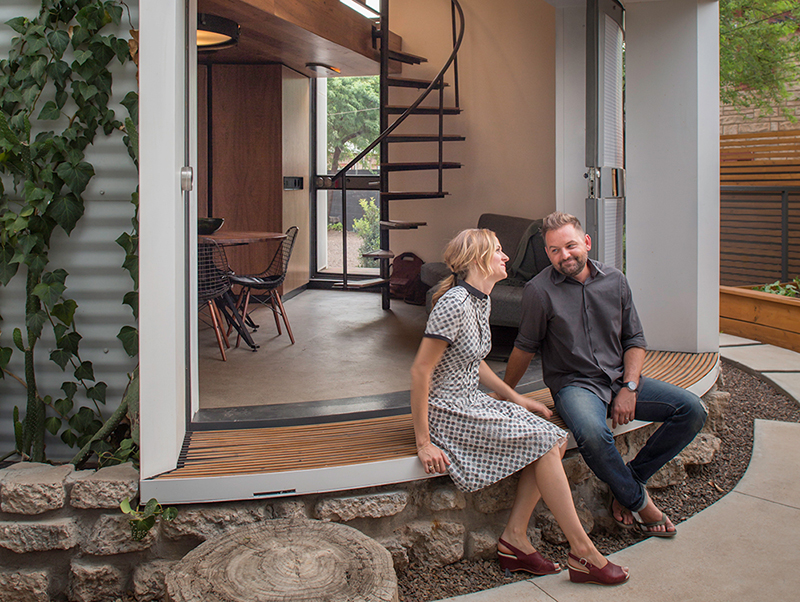
They’ve also had to learn how to live with (a lot) less.
“We had to do a pretty serious pare-down of our stuff to move in here, and that honestly just keeps continuing,” Thibault says. “I think he has more shoes [than I do].”
“She has more shoes,” Kaiser replies with a smile. “There’s no contest.”
No matter how many pairs of shoes, the couple says they wouldn’t trade their out-of-the-box living experience.
“Home can be so many things,” Kaiser says. “… The ability for people to fashion that to their own liking is a beautiful freedom that we have.”
Video by Craig Schwisow and Tom Hanny. Photos by Matt Winquist; design sketch by Christoph Kaiser.
Don't miss out on the next Zillow video! Subscribe today to see the latest.
Originally published August 3, 2016.
Related:
- Teensy Waterfront Homes for Sale
- Sanctuary: An Artist’s Oasis
- The Wackiest Tiny Home You’ve Ever Seen
via Zillow Porchlight http://ift.tt/2u1AIFC
Here's the Wackiest Tiny Home You've Ever Seen
From the front, this Seattle home appears normal. But walk around to the side, and you’ll see a house that’s a sliver of its front-facing self - and measures just 4½ feet wide.
It wasn’t frugality or hipness that inspired its unique construction back in 1925, decades before tiny homes were a thing.
It was spite.
There are two popular versions of how it happened: Either the owner of a neighboring home got divorced and gave his wife a wedge of land he believed was too small for her to use, or a neighboring owner lowballed the owner of the slim property, believing he couldn’t built on it — and so he did.
The result is a 2-bedroom, 2-bath “tiny duplex” that’s 16 feet at its widest and 4½ feet at its narrowest — and listed earlier this year for $519,900 with Kathy Rathvon of RE/MAX Eastside Brokers.
Former owner Clay Wallace, who’s an architect, appreciated the home’s history and character, including its Spanish Colonial Revival look with “slight Italianate influences.” He liked that it maintained its style through numerous renovations.
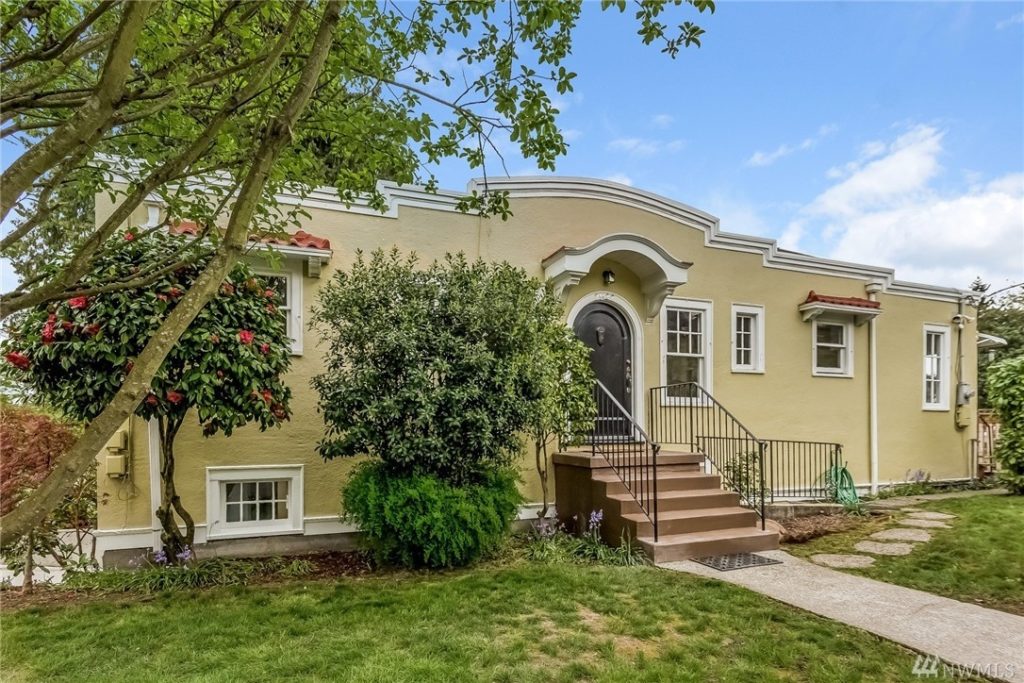
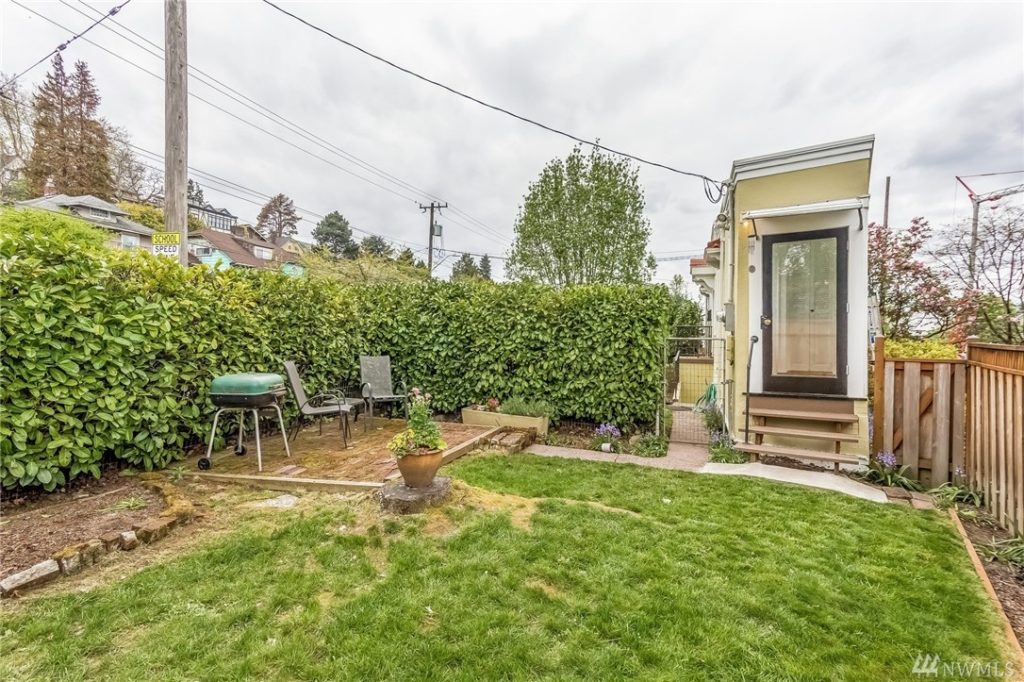
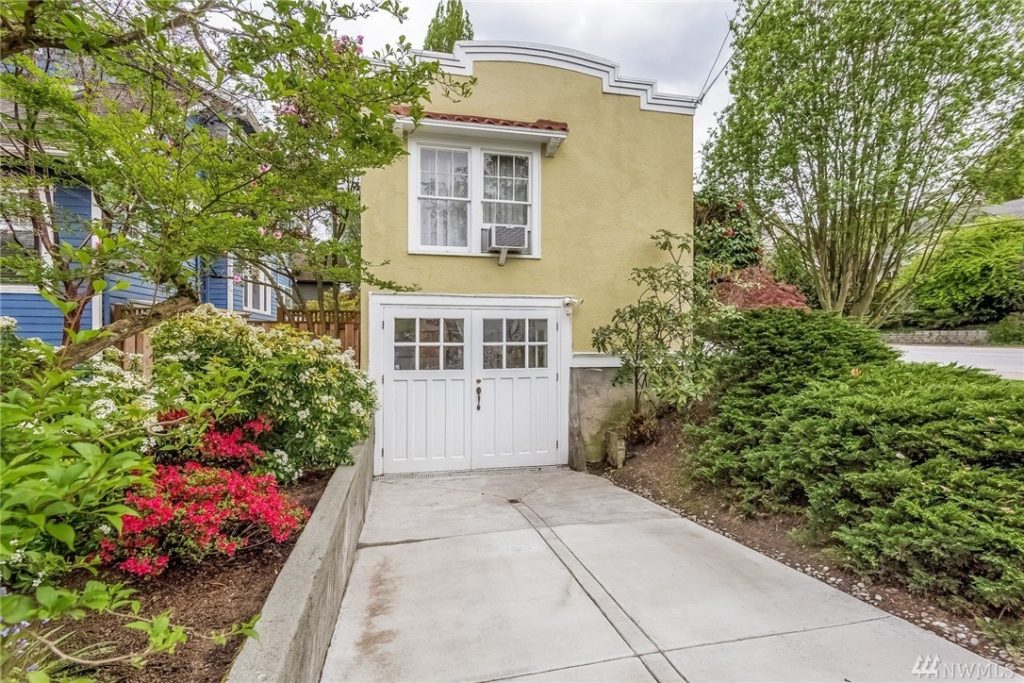
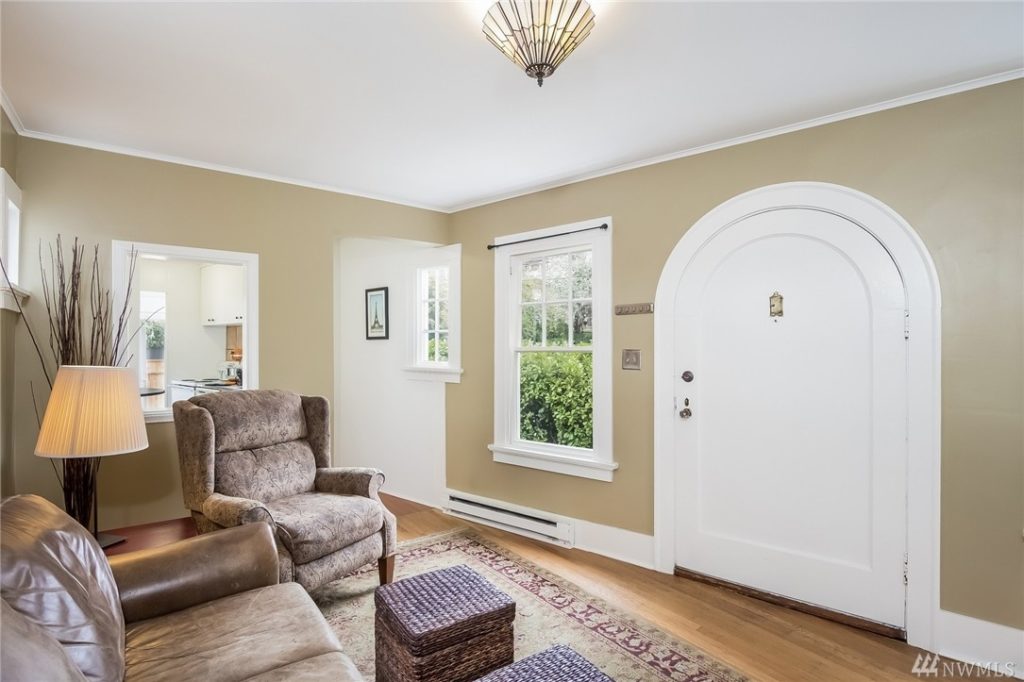
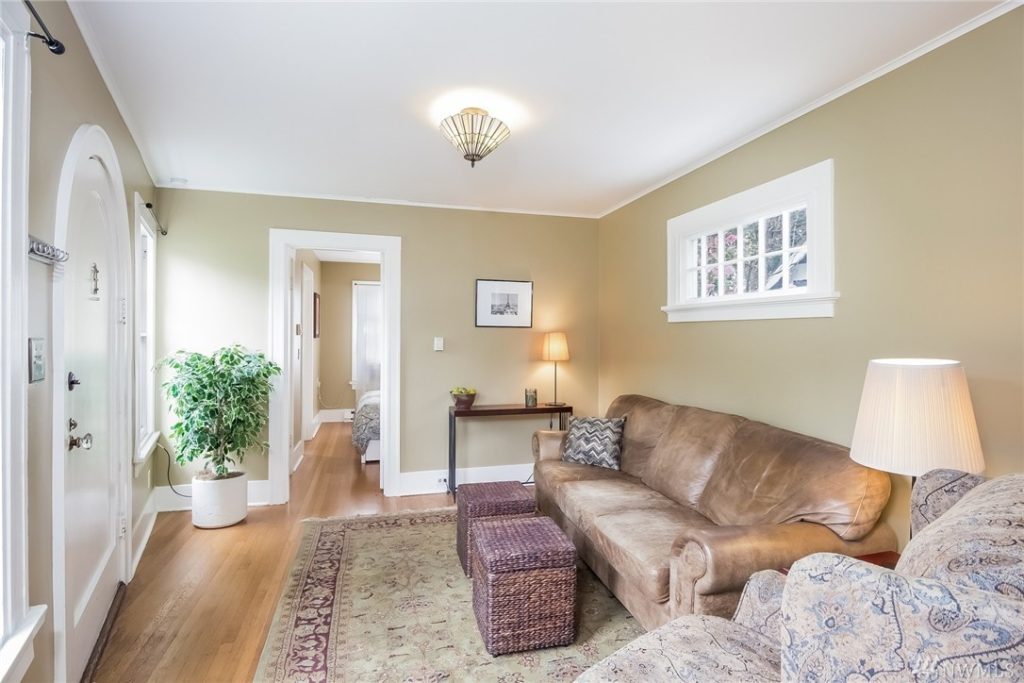
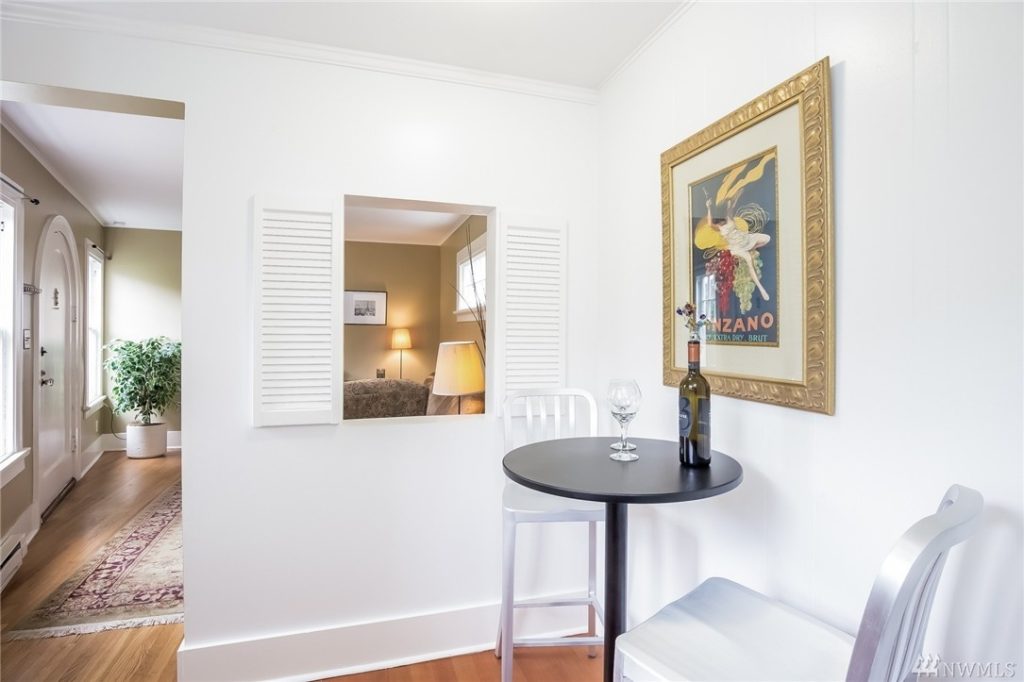
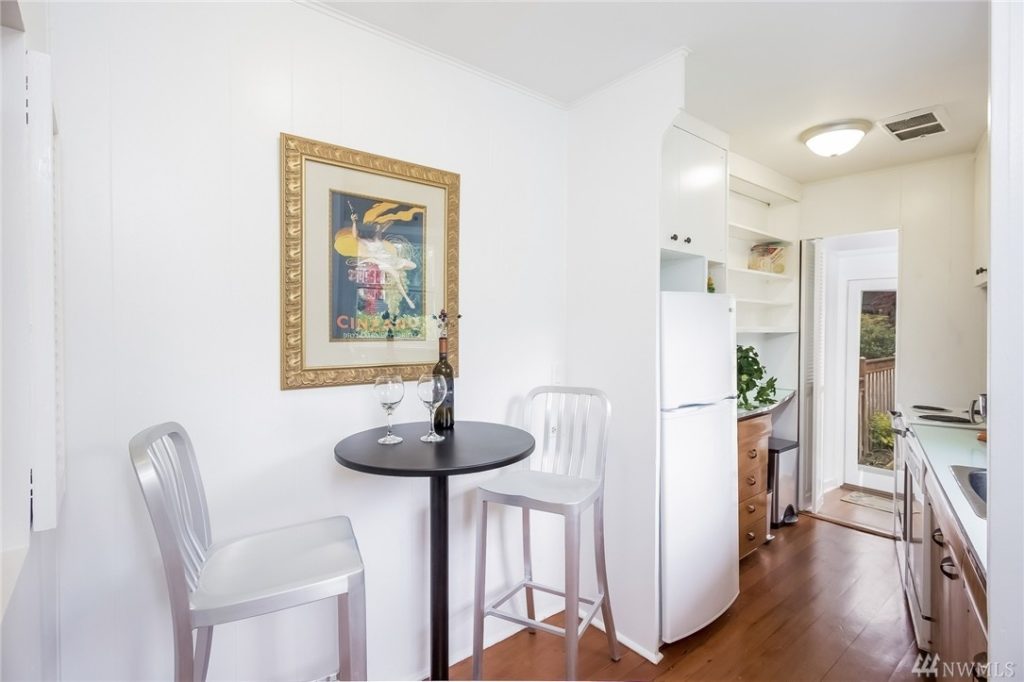
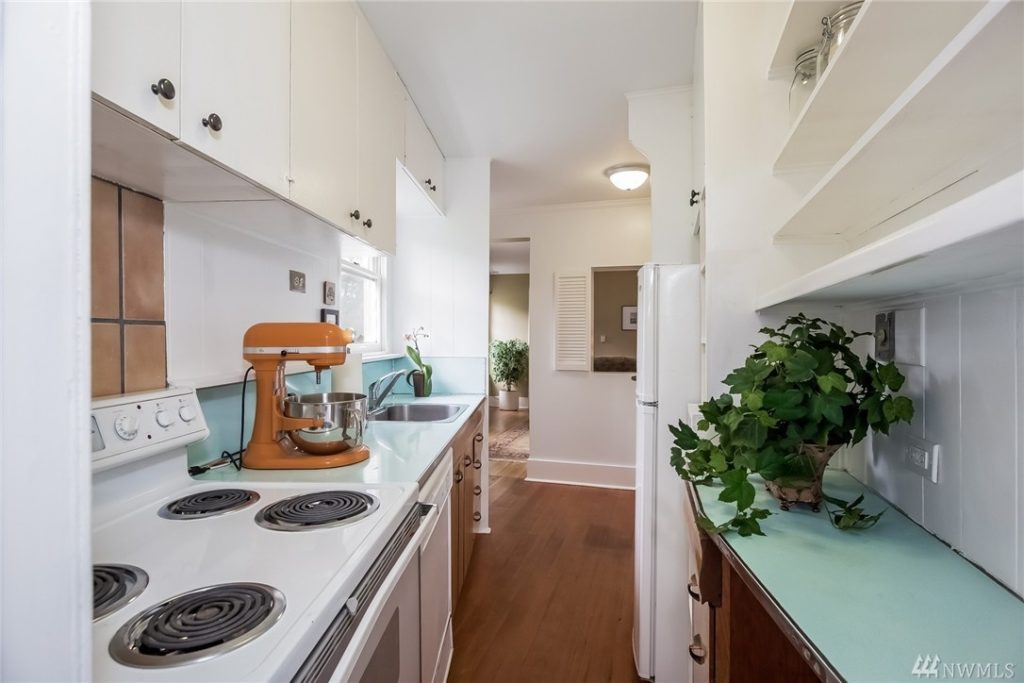
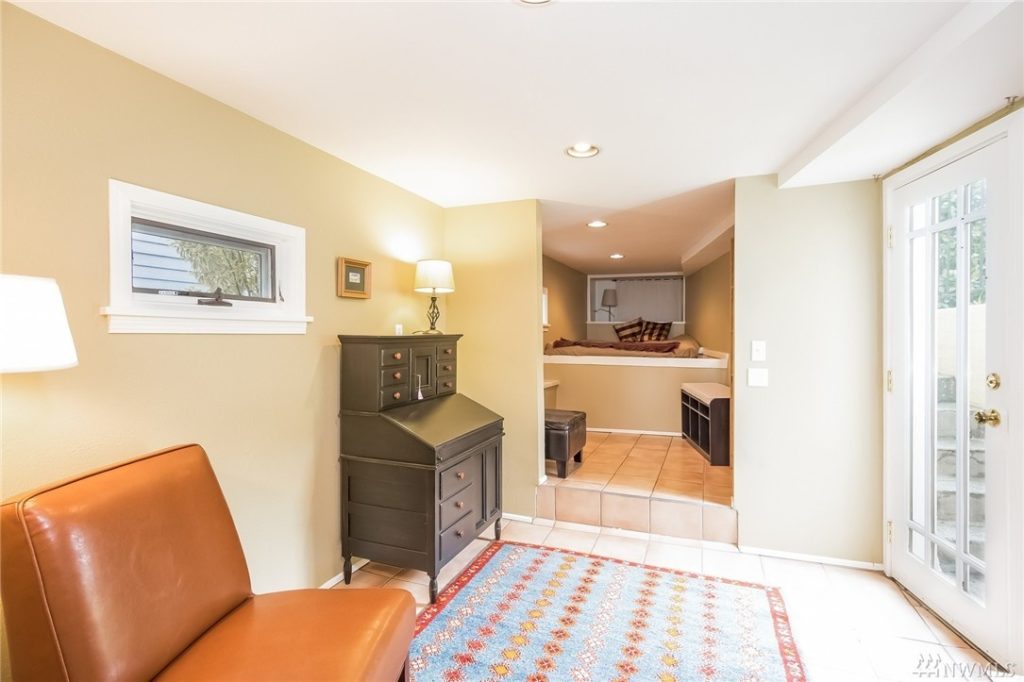
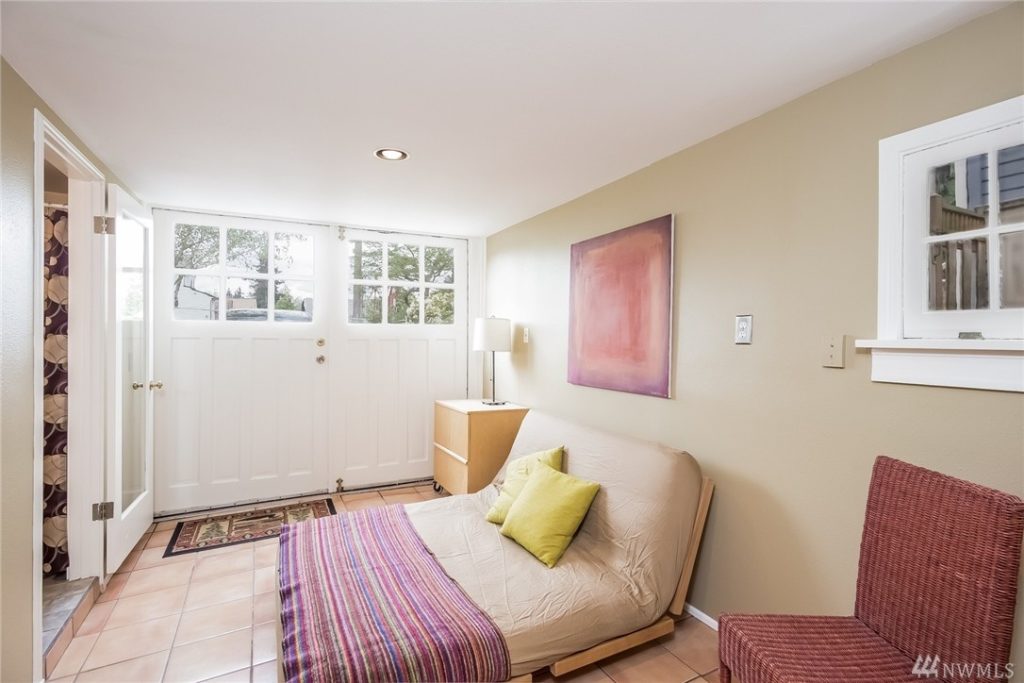
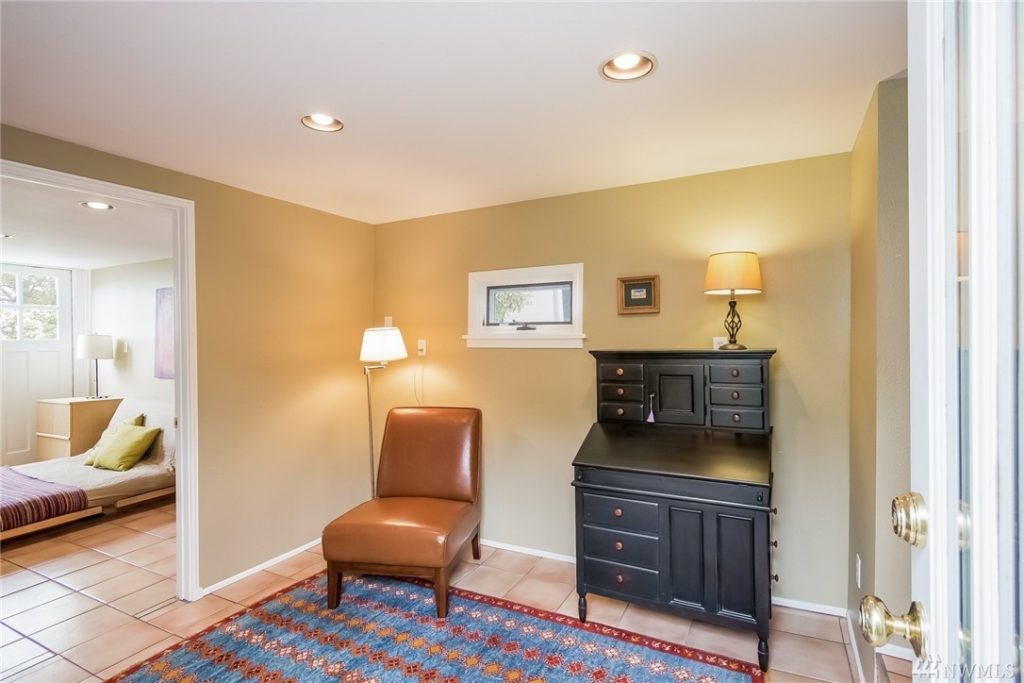
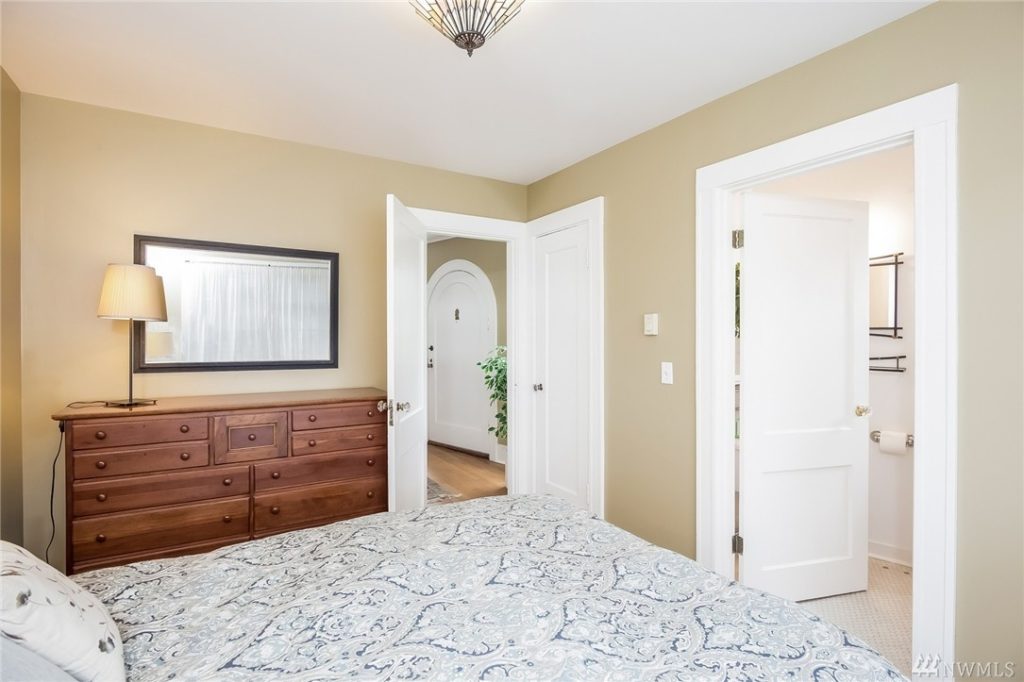
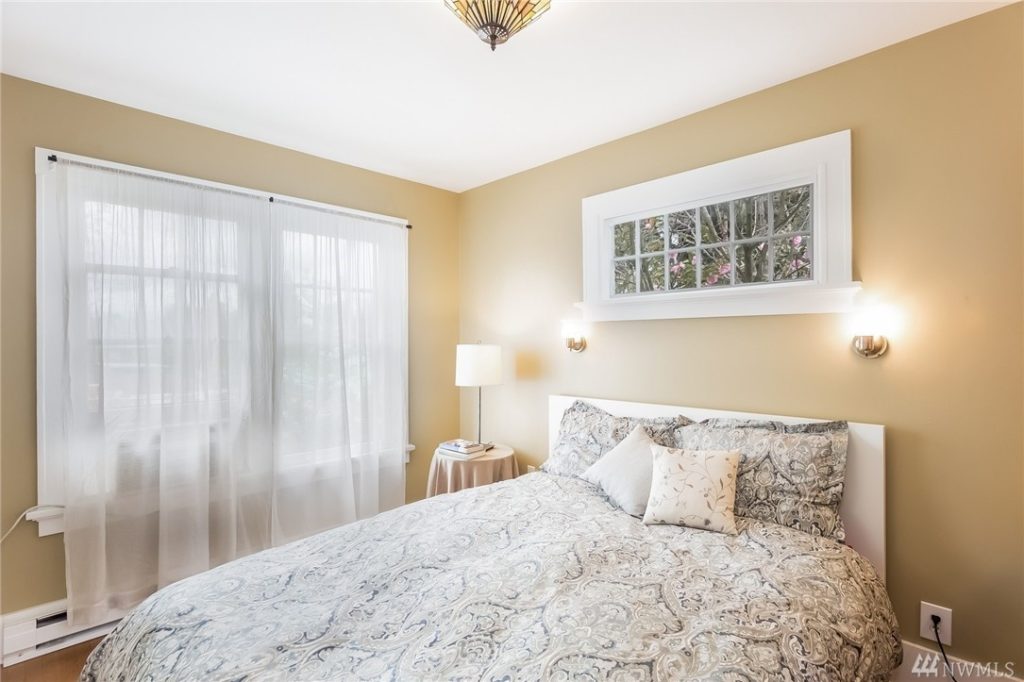
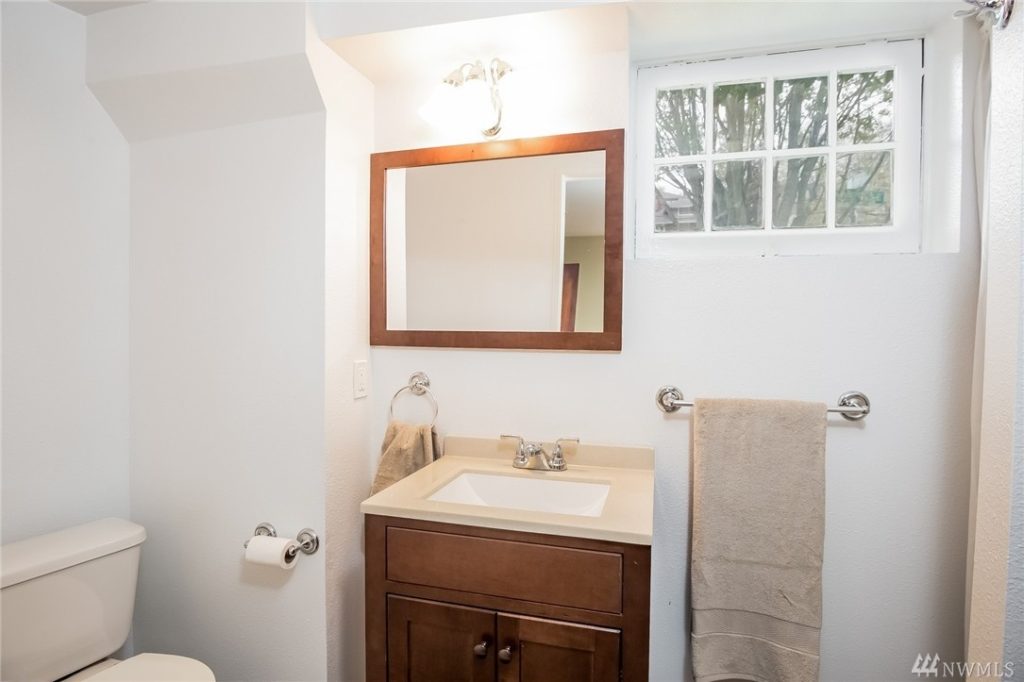
“It just spoke to me,” he said. “I didn’t know of its neighborhood prominence — it’s like a landmark for many people. ”
He found the home comfortable, from its 9-by-14-foot living room to the galley kitchen and bedrooms that measure more than 100 square feet. Wallace also liked the location, near shops and a major highway, and a short walk from Seattle’s 230-acre arboretum.
Photos by PlanOmatic.
Video by Erik Hecht.
Don’t miss out on the next Zillow video! Subscribe today to see the latest.
Originally published April 27, 2016.
Related:
- San Francisco’s Least Expansive Home
- 500-Square-Foot Rentals: Good Things in Small Packages
- Tiny Home Traits: 5 Features Every Small Space Needs
via Zillow Porchlight http://ift.tt/2G7zSxz